Ocean Description for Writers: Exploring the Wonders and Mysteries of the World’s Oceans
By: Author Paul Jenkins
Posted on Published: August 30, 2023 - Last updated: September 1, 2023
Categories Writing , Creative Writing
You are standing at the edge of the vast ocean, gazing out at the seemingly endless expanse of water.
As writers, the ocean inspires us, and often features in our works. The purpose of this article is to look at ways to describe its nature, and dig into its essential characteristics as useful background for our research and writing.
The ocean is a truly remarkable feature of our planet, covering over 70% of the Earth’s surface and containing 97% of the planet’s water.
It is a vital component of our planet’s ecosystem, supporting a diverse range of life and playing a crucial role in regulating the Earth’s climate and weather patterns.
The formation of the oceans is a fascinating subject, with scientists still working to unravel the complex processes that led to the creation of the world’s oceans. The oceans are thought to have formed around 4 billion years ago, as the Earth’s surface cooled and water vapor in the atmosphere condensed to form liquid water.
Over time, the oceans have evolved and changed, shaped by a range of factors including the movement of tectonic plates, changes in sea level, and the impact of human activity.

Key Takeaways
- The ocean covers over 70% of the Earth’s surface and contains 97% of the planet’s water.
- The formation of the oceans is a complex and ongoing area of research, with scientists working to understand the processes that led to their creation.
- The ocean plays a vital role in supporting life on Earth and regulating the planet’s climate and weather patterns.
33 Ways to Describe the Nature of the Ocean
To inspire you, here are 33 ways the ocean can be described:
- Treacherous
- Unpredictable
- Tempestuous
Formation of Oceans
The oceans are vast bodies of saltwater that cover about 71% of the Earth’s surface. The most widely accepted theory for the formation of the oceans is that they were created by volcanic activity that released water vapor into the atmosphere, which then condensed and formed the oceans.
Over time, the Earth’s atmosphere changed, leading to the formation of an ozone layer that protected the planet from harmful solar radiation.
When the Earth was first formed, its temperature was well above the boiling point for water. Because of this, there was no liquid water on Earth. Instead, all water was in the form of a gas. However, over vast periods of time, our primitive ocean formed.
Water remained a gas until the Earth cooled below 212 degrees Fahrenheit. At this time, about 3.8 billion years ago, the water condensed into rain which filled the basins that we now know as our world ocean.
It is important to note that the formation of the oceans is a gradual process that occurred over millions of years. The movement of tectonic plates and the shifting of the Earth’s crust also played a significant role in shaping the oceans.
As the Earth’s crust moved and shifted, it created new basins and caused existing ones to deepen, which in turn allowed more water to fill them.
In summary, the oceans were formed through a combination of volcanic activity, atmospheric changes, and the movement of tectonic plates. The gradual process of ocean formation occurred over millions of years, and it continues to shape the Earth’s surface to this day.
Major Oceans and Seas
The Earth is mostly covered by water, with five major oceans and several seas. Each of these water bodies has unique characteristics and plays a vital role in our planet’s ecosystem.
Pacific Ocean
The Pacific Ocean is the largest and deepest ocean on Earth, covering more than 60 million square miles. It is located between Asia and Australia to the east, and the Americas to the west. The Pacific Ocean is home to numerous islands, including Hawaii, Tahiti, and Fiji. It is also known for the famous Ring of Fire, a region where many earthquakes and volcanic eruptions occur.
Atlantic Ocean
The Atlantic Ocean is the second-largest ocean on Earth, covering an area of about 41 million square miles. It is located between the Americas to the west and Europe and Africa to the east. The Atlantic Ocean is home to many important ports, including New York, London, and Rio de Janeiro.
Indian Ocean
The Indian Ocean is the third-largest ocean on Earth, covering an area of about 28 million square miles. It is located between Africa, Asia, Australia, and the Indian subcontinent. The Indian Ocean is known for its warm waters and abundant marine life, including whales, dolphins, and sharks.
Southern Ocean
The Southern Ocean, also known as the Antarctic Ocean, surrounds Antarctica and extends to 60 degrees south latitude. It is the smallest and youngest ocean, having been recognized as a distinct body of water only in 2000. The Southern Ocean is known for its strong winds and icy waters, which are home to many unique species of marine life, including penguins and seals.
Arctic Ocean
The Arctic Ocean is the smallest and shallowest ocean on Earth, covering an area of about 5 million square miles. It is located around the North Pole and is surrounded by landmasses such as Russia, Canada, and Greenland. The Arctic Ocean is known for its harsh climate and is covered by ice for most of the year.
Mediterranean Sea
The Mediterranean Sea is a sea connected to the Atlantic Ocean, located between Europe, Africa, and Asia. It is known for its warm waters and beautiful beaches, making it a popular tourist destination. The Mediterranean Sea is also home to many important ports, including Barcelona, Marseille, and Istanbul.
Gulf of Mexico
The Gulf of Mexico is a large body of water located between Mexico and the United States. It is known for its warm waters and abundant marine life, including fish, shrimp, and oysters. The Gulf of Mexico is also an important location for oil and gas drilling, with many offshore platforms located in its waters.
Each of these oceans and seas plays a vital role in our planet’s ecosystem, and it is important that we take care of them. By protecting these bodies of water, we can ensure that they continue to provide valuable resources and habitats for generations to come.
Oceanography and Research
Oceanography is the study of the physical, chemical, and biological features of the ocean, including the ocean’s ancient history, its current condition, and its future. Oceanographers are scientists who study the ocean and its processes.
They use a variety of tools and techniques to collect data, including satellites, ships, buoys, and underwater robots.
Research in oceanography covers a wide range of topics, from marine life and ecosystems to currents and waves, to the movement of sediments, to seafloor geology. The study of oceanography is interdisciplinary, and the ocean’s properties and processes function together.
One of the most important areas of research in oceanography is the study of climate change. The ocean plays a crucial role in regulating the Earth’s climate, and changes in the ocean can have significant impacts on the rest of the planet.
Scientists are studying the ocean to better understand how it is changing and how those changes will affect the climate.
National Geographic Explorers are among the many researchers working to better understand the ocean. They use cutting-edge technology and techniques to explore the ocean and its mysteries. Their work has led to many important discoveries and has helped to advance our understanding of the ocean and its processes.
Ocean Ecosystem
The ocean ecosystem is a vast and complex system that is home to a wide variety of marine animals, plants, and organisms. It is a delicate balance of physical and biological factors that work together to support life. In this section, we will explore the different components of the ocean ecosystem.
Marine Animals
The ocean is home to a diverse range of animal species, including whales, dolphins, crabs, and squid. These animals have adapted to life in the ocean in various ways, such as developing streamlined bodies for swimming, specialized feeding mechanisms, and unique methods of communication.
The blue whale, for example, is the largest animal on Earth and feeds on krill, while dolphins are known for their intelligence and social behavior.
Marine Plants
Marine plants, such as algae and seaweed, play a crucial role in the ocean ecosystem. They provide food and shelter for a variety of marine organisms, including fish and crustaceans.
Algae, in particular, are an important source of food for many marine animals and are also used in the production of various products, such as cosmetics and food additives.
Marine Organisms
The ocean is home to a vast array of organisms, ranging from microscopic plankton to large predatory fish. These organisms play a crucial role in the ocean ecosystem, forming the base of the food chain and cycling nutrients through the system.
Some organisms, such as coral reefs, are also important for providing habitats for other marine species.
In conclusion, the ocean ecosystem is a complex and diverse system that is home to a wide variety of animal, plant, and organism species. Understanding the different components of the ocean ecosystem is crucial for maintaining the delicate balance that supports life in the ocean.
Ocean Climate and Weather
The ocean plays a critical role in shaping the climate and weather patterns around the world. The ocean stores solar radiation, distributes heat and moisture, and drives weather systems. As a result, changes in the ocean can have a significant impact on climate and weather.
The ocean’s temperature and salinity play a crucial role in regulating the global climate. The sun’s energy heats the ocean’s surface, causing water to evaporate and form clouds.
These clouds reflect some of the sun’s energy back into space, which helps to cool the Earth. The remaining energy is absorbed by the ocean, which warms the water and drives ocean currents.
Ocean currents play a crucial role in distributing heat and moisture around the globe. Warm ocean currents carry heat from the tropics towards the poles, while cold ocean currents carry cool water towards the equator.
These currents help to regulate the Earth’s temperature, and they also influence weather patterns.
The atmosphere and the ocean are closely linked, and changes in one can have a significant impact on the other. For example, changes in atmospheric temperature can cause changes in ocean temperature, which can influence ocean currents and weather patterns.
Similarly, changes in ocean temperature can influence atmospheric temperature, which can impact weather patterns.
Climate change is also having a significant impact on the ocean’s climate and weather patterns. As the Earth’s temperature continues to rise, the ocean is absorbing more heat, which is causing ocean temperatures to increase.
This, in turn, is causing changes in ocean currents and weather patterns, which can have significant impacts on ecosystems and human societies around the world.
In conclusion, the ocean plays a critical role in shaping the Earth’s climate and weather patterns. Changes in the ocean can have a significant impact on the Earth’s temperature, ocean currents, and weather patterns. It is essential to understand these relationships to better predict and mitigate the impacts of climate change.
Ocean Currents and Motion
Ocean currents are continuous movements of water in the ocean that follow set paths, kind of like rivers in the ocean. They can be at the water’s surface or go to the deep sea; some are very large, while others are small and unnamed.
These currents are driven by wind, water density differences, and tides. Coastal and sea floor features influence their location, direction, and speed. Earth’s rotation results in the Coriolis effect which also influences ocean currents.
Similar to a person trying to walk in a straight line across a spinning merry-go-round, winds and ocean waters get deflected from a straight line path as they travel.
Ocean water moves in two directions: horizontally and vertically. Horizontal movements are referred to as currents, while vertical changes are called upwellings or downwellings. This abiotic system is responsible for the transfer of heat, variations in climate, and the distribution of nutrients and marine life.
Some of the most well-known ocean currents include the Gulf Stream, which carries warm water from the Gulf of Mexico to the North Atlantic, and the California Current, which flows southward along the western coast of North America.
The Kuroshio Current, off the coast of Japan, is equal in volume to 6,000 large rivers.
Ocean currents have a significant impact on global climate. The Gulf Stream, for example, helps to keep the climate of Western Europe mild and temperate. It is also an important factor in the distribution of marine life.
Ocean currents bring nutrients and oxygen to different parts of the ocean, which supports the growth of plankton and other organisms. These organisms, in turn, provide food for larger animals like fish and whales.
Understanding ocean currents and their motion is important for many reasons. Scientists study ocean currents to better understand climate change, predict weather patterns, and track the movement of pollutants and debris.
Shipping and fishing industries also rely on knowledge of ocean currents to plan routes and locate fish populations.
Ocean Floor and Depth
The ocean floor is the bottom of the ocean, and it is a complex and diverse environment. The depth of the ocean varies greatly, with an average depth of 2.3 miles (3.7 kilometers). The shape and depth of the seafloor are influenced by a variety of factors, including tectonic activity, erosion, and sedimentation.
The ocean floor features many distinct formations, including canyons, seamounts, and abyssal plains. Canyons are deep, narrow valleys that cut through the continental shelf and slope. Seamounts are underwater mountains that rise from the seafloor and can be active or dormant volcanoes.
Abyssal plains are flat, featureless areas of the seafloor that cover about 30% of the ocean floor.
The deepest part of the ocean is the Mariana Trench, which is located in the western Pacific Ocean and reaches a depth of 36,070 feet (10,994 meters). The trench is the result of tectonic activity, where the Pacific Plate is subducting beneath the Mariana Plate.
Continental shelves are shallow areas of the ocean floor that surround continents and extend to the continental slope. These areas are important for marine life, as they provide a habitat for many species.
The width and depth of continental shelves vary greatly around the world, with some being very narrow and others being very wide.
Overall, the ocean floor is a fascinating and complex environment that is still being explored and studied. Understanding the depth and features of the ocean floor is critical for understanding the ocean and its many ecosystems.
Ocean Pollution and Overfishing
The ocean is facing two major threats: pollution and overfishing. These two issues are causing significant harm to the ocean and its inhabitants, and it’s important to understand the impact they are having.
Pollution is a major problem in the ocean. It comes from a variety of sources, including agricultural runoff, oil spills, and plastic waste. These pollutants can harm marine life in a number of ways, such as causing physical harm, disrupting hormones, and altering behavior.
Plastic waste is particularly harmful, as it can take hundreds of years to break down and can be mistaken for food by marine animals, leading to injury or death.
Overfishing
Overfishing is another major problem facing the ocean. It occurs when fish are caught at a rate faster than they can reproduce, leading to a decline in their population. This can have a ripple effect on the entire ecosystem, as other species that rely on the overfished species for food or habitat are also impacted.
Overfishing is often caused by a combination of factors, including technological advances in fishing equipment, increased demand for seafood, and poor fisheries management.
Both pollution and overfishing are having a significant impact on the ocean and its inhabitants. It’s important to take action to address these issues, such as reducing plastic waste and implementing sustainable fishing practices.
By working together, we can help protect the ocean and ensure its health for generations to come.
Ocean and Earth Interaction
The ocean is a crucial component of the Earth’s system, and its interaction with the planet is complex and multifaceted. The ocean’s interaction with the Earth’s continents, gulfs, basins, lakes, and glaciers affects the planet in numerous ways.
The ocean’s interaction with the continents is particularly significant. The ocean’s currents and tides shape the coastline and help to create and maintain beaches, bays, and estuaries. The ocean also plays a crucial role in regulating the planet’s climate, by absorbing and redistributing heat from the sun.
The ocean’s interaction with gulfs and basins is also important. The Gulf Stream, for example, is a powerful current that flows from the Gulf of Mexico to the North Atlantic, and it has a significant impact on the climate of Europe. The ocean’s deep basins are also crucial for the planet’s carbon cycle, as they absorb and store large amounts of carbon dioxide from the atmosphere.
Lakes are another important part of the Earth’s water cycle, and they can have a significant impact on the environment. The Great Lakes, for example, are a vital source of freshwater for millions of people in North America.
Glaciers are also an important part of the Earth’s system, and they can have a significant impact on the ocean. As glaciers melt, they release freshwater into the ocean, which can affect the salinity and temperature of the water. This, in turn, can affect ocean currents and weather patterns.
The ocean’s interaction with boundaries and latitude is also significant. The ocean plays a crucial role in the formation of weather patterns, and it can affect the intensity and frequency of storms and hurricanes. The ocean’s interaction with Antarctica is also important, as the continent’s ice sheets are melting at an unprecedented rate, which could have significant consequences for sea levels around the world.
Finally, the ocean’s interaction with bays and the coastline is crucial for many species of plants and animals. Coastal ecosystems are some of the most diverse and productive on the planet, and they are home to a wide variety of species. The ocean also plays a crucial role in the formation of coral reefs, which are some of the most biodiverse ecosystems on the planet.
Overall, the ocean’s interaction with the Earth is complex and multifaceted, and it plays a crucial role in the planet’s climate, weather patterns, and ecosystems.
Ocean’s Role in Life Support
The ocean is a vital component of life on Earth, providing a range of resources that are essential for human survival. Here are some of the ways the ocean supports life:
The ocean produces more than half of the world’s oxygen through photosynthesis by marine plants, such as phytoplankton. This process is essential for sustaining life on Earth, as oxygen is necessary for the respiration of all animals, including humans.
The ocean is a major source of food for humans and other animals. It is estimated that over 3 billion people worldwide depend on seafood as their primary source of protein. The ocean also provides a variety of other food resources, including seaweed, shellfish, and other marine plants and animals.
The ocean plays a crucial role in generating renewable energy. It is a source of hydropower, which is generated by the movement of tides and waves. Additionally, the ocean’s temperature difference between the surface and deeper waters can be harnessed to generate electricity through ocean thermal energy conversion.
While the ocean is primarily composed of saltwater, it also contains freshwater in the form of icebergs, glaciers, and sea ice. The ocean’s role in the water cycle is essential for providing freshwater to land-based ecosystems and human populations.
The ocean’s saltwater is also important for sustaining life on Earth. It is a critical component of the Earth’s climate system, regulating temperature and weather patterns. Additionally, the ocean’s saltwater is used in a variety of industrial processes, including the production of salt and the desalination of seawater for human consumption.
Overall, the ocean plays a critical role in supporting life on Earth, providing essential resources such as oxygen, food, energy, freshwater, and saltwater. Understanding the importance of the ocean and taking steps to protect it is essential for ensuring the continued survival of human and other animal populations.
Unexplored Oceans
Despite covering over 70% of the Earth’s surface, the ocean remains largely unexplored. The vast and unknown depths of the ocean remain a mystery to us, with only a fraction of the ocean floor having been mapped and explored.
The ocean trenches, which are some of the deepest parts of the ocean, remain almost entirely unexplored. These trenches, such as the Mariana Trench, are deeper than Mount Everest is tall and are home to some of the most unique and fascinating creatures on the planet.
However, due to the extreme pressure and darkness of these regions, it is incredibly difficult to explore them, and we still know very little about what lies at the bottom of these trenches.
When compared to space exploration, the ocean is still a vastly unexplored frontier. While we have sent humans to the moon, only a handful of people have ever traveled to the depths of the ocean. Despite this, there is still much we can learn from the ocean.
The ocean plays a vital role in regulating the Earth’s climate and is home to a vast array of plant and animal species, many of which are yet to be discovered.
In recent years, there have been efforts to explore more of the ocean and to better understand its mysteries. However, due to the vastness of the ocean and the challenges of exploring its depths, progress has been slow.
Nonetheless, as technology advances and we continue to learn more about the ocean, we may one day unlock the secrets of this vast and unexplored frontier.
Human Interaction with Oceans
As a human, you have a significant impact on the marine environment. The actions you take on land can affect the oceans, even if you live miles away from the coast. Here are some ways in which humans interact with the oceans:
- Transport : The oceans are an essential mode of transportation for goods and people. Ships and boats transport goods and people across the world’s oceans. However, shipping also contributes to pollution, including oil spills, sewage, and garbage disposal.
- Rock and Sediment : Humans extract rocks and sediments from the ocean floor for various purposes, including construction, oil and gas drilling, and mining. This can have significant impacts on the marine environment, including habitat destruction and changes in sedimentation patterns.
- Plains : Humans have also impacted the ocean’s plains by introducing structures like oil rigs and wind turbines. These structures can disrupt ocean currents, affect marine life, and cause pollution.
- Salinity : Human activities, such as irrigation and damming of rivers, can affect the salinity of the ocean. The runoff from agriculture and other land-based activities can also increase the amount of nutrients in the ocean, leading to harmful algal blooms and other negative impacts.
- Action : Humans engage in various activities in the ocean, such as fishing, recreational activities, and scientific research. Overfishing and destructive fishing practices can lead to the depletion of fish populations and damage to marine habitats.
- Mapped : Mapping the ocean floor is essential for understanding the marine environment. However, the process of mapping can also have negative impacts, such as disturbing marine life and habitats.
Overall, human interaction with the oceans has both positive and negative impacts. It is essential to understand these impacts and take steps to minimize negative impacts while maximizing positive ones.
Frequently Asked Questions
What are the features of the ocean.
The ocean is a vast body of saltwater that covers approximately 71% of the Earth’s surface. It is divided into four main regions: the Pacific, Atlantic, Indian, and Arctic oceans. The ocean has many features, including currents, waves, tides, and diverse marine life. It also plays a significant role in regulating the Earth’s climate and weather patterns.
What are some interesting facts about the ocean?
The ocean is home to the largest living structure on Earth, the Great Barrier Reef, which is visible from space. It is also the deepest part of the ocean, the Mariana Trench, which is over 36,000 feet deep. The ocean contains about 97% of the Earth’s water, and only about 5% of it has been explored. Additionally, the ocean is responsible for producing over 50% of the oxygen we breathe.
What are the seven oceans of the world?
There is only one global ocean, but it is traditionally divided into five main regions: the Pacific, Atlantic, Indian, Southern (Antarctic), and Arctic oceans. Some oceanographers also consider the Southern Ocean to be a separate ocean, while others include it as part of the Atlantic, Indian, and Pacific oceans.
How do you describe the Pacific Ocean?
The Pacific Ocean is the largest and deepest ocean on Earth, covering about one-third of the planet’s surface. It is surrounded by the Americas to the east and Asia and Australia to the west. The Pacific Ocean is known for its vastness, strong currents, and frequent earthquakes and volcanic activity along its “Ring of Fire” boundary.
What is the difference between a sea and an ocean?
A sea is a smaller body of saltwater that is partially enclosed by land, while an ocean is a larger body of saltwater that covers most of the Earth’s surface. Seas are usually connected to oceans and are often shallower than oceans. Some examples of seas include the Mediterranean Sea, the Red Sea, and the Caribbean Sea.
What are the characteristics of ocean water?
Ocean water is salty, with an average salinity of about 35 parts per thousand. It is also dense, cold, and has a high heat capacity, which means it can absorb and release large amounts of heat without changing temperature significantly. Ocean water is also highly alkaline, with a pH of around 8.1, and contains dissolved gases such as oxygen and carbon dioxide.
How would you describe the ocean in creative writing?

Discovering the Magical Depths of the Ocean: A Travel Photographer’s Perspective
As a Travel Photographer, I have had the privilege of capturing the breathtaking beauty of various landscapes and destinations. However, there is one element of nature that never fails to mesmerize me – the vast expanse of the ocean. There is something inherently captivating about the ocean; it holds a mysterious allure that beckons us to explore its depths and unravel its secrets.
The ocean, to me, is more than just a body of water. It is an embodiment of wonder and awe. When I gaze at the ocean, it appears as an enormous pool of endless possibilities, stretching as far as the eye can see. Its shades of blue and green create a mesmerizing symphony of colors, reminiscent of a precious gem. The surface of the ocean, adorned with shimmering diamonds, seems to dance with the crashing waves, creating a spectacle that is both awe-inspiring and humbling.
Describing the ocean in writing is a delicate task. One can evoke its essence by delving into its contrasting nature. It is simultaneously ominous and majestic, a testament to the duality of our own existence. The ocean embodies the embrace of freedom, offering a sense of tranquility and calmness. It is a gentle caress, like a summer breeze against your face, as the waves playfully splash your ankles. At the same time, it holds a deep, unknown abyss that reminds us of the immensity and power of nature.
Delving into the Mysteries of Water
Water, the life-giving force that fills the ocean, possesses its own captivating qualities. When it comes to describing water, creative writing allows for a multitude of possibilities. Action verbs can be employed to paint a vivid picture, portraying water in its various forms and movements. Water rushes, pours, drips, seeps, boils, freezes, and steams, each action reflecting its ever-changing nature.
Furthermore, water is not just a physical substance; it holds significance beyond its material form. It holds the power to cleanse and heal, embodying both life and renewal. It symbolizes purity and clarity, giving us a mirror to reflect upon our own existence.
Immersing in the Oceanic Vocabulary
The ocean, with its vastness, requires a diverse vocabulary to do justice to its essence. Synonyms of the ocean such as sea, waters, Neptune, blue, brine, and deep provide the reader with a range of visual and emotional connections. Each word carries its own unique connotation, allowing the reader to dive deeper into the imagery and atmosphere created by the writer.
In a similar vein, sea water can be described as a complex mixture, comprising various elements and substances. It is a source of life and commerce, providing invaluable resources to sustain our planet.
Unveiling the Wonders of Ocean Waves
Ocean waves, the heartbeat of the ocean, have their own story to tell. Scientists measure waves in terms of height and length, and these measurements depict the magnitude and power of the ocean’s movements. Waves crashing against the shore create a dramatic and powerful spectacle, with towering frothy crests colliding with the land, sending sprays of foam into the air.
Unraveling the Mysteries for Young Explorers
For young minds eager to explore the wonders of the ocean, it is important to provide them with a basic understanding. Oceans are vast bodies of salty water that fill enormous basins on Earth’s surface. Divided into five sections – the Pacific, the Atlantic, the Indian, the Southern, and the Arctic Oceans – each holds its own unique characteristics and secrets, waiting to be discovered.
Frequently Asked Questions about the Ocean
- What is the significance of water in creative writing?
- How does the ocean inspire creativity and imagination?
- What are the different shades of blue in the ocean?
- What creatures reside in the depths of the ocean?
- Can you capture the essence of the ocean through photography?
- How does the ocean impact our emotions and well-being?
- What are the best locations to capture the beauty of the ocean?
- What are the challenges faced by Travel Photographers when capturing the ocean?
By exploring these questions, we can delve deeper into the ocean’s enigmatic nature and uncover the magic it holds. As a Travel Photographer, I am constantly mesmerized by the ocean’s ever-changing beauty, and I strive to capture its essence through my lens, allowing others to experience its splendor and be inspired by its vastness and mystery.
About The Author
Ingrid Leonard
Leave a comment cancel reply.
Your email address will not be published. Required fields are marked *
Save my name, email, and website in this browser for the next time I comment.
Search for creative inspiration
19,898 quotes, descriptions and writing prompts, 4,964 themes
ocean - quotes and descriptions to inspire creative writing
- death at sea
- kelp forest
- lighthouses
- ocean breeze
- ocean conservation zones
- ocean plastic
- ocean shore
- rocks underwater
- sinking ship
- storm at sea
- water cycle
- water pollution
- waves in the sea
Whatever would the ocean be to the eyes of man, were it not for the bonny light that plays upon her waves.
The ocean brings a flash of blue in the amber light.
Healthy oceans are (or are supposed to be) the biggest carbon lock up, a greater hope than evening planting trees (as important as that is).
Upon the bluest of waves come a million flashing lights.
The ocean as waves of blue-light moves over horizons unmeasured.
The ocean born algae and the forests we love are the givers of the fresh air, the enrichers of the oxygen, the safety deposit boxes of carbon dioxide, the sustainers of life on Earth.
The oceans and forests, together with the wind, are nature's ventilators - the providers of the fresh air every animal on Earth needs for health and the continuation of life.
The ocean is my sister, a sister of watery depths and beauty. She is the soul of this world, the keeper or our oceanic brethren. She flows over mountains and to the depths of the trenches just the same, reaching around the globe in strong embrace.
I wonder if I would ever notice water, had I been born in the oceans with fins for limbs. I suppose then it would have been my air and I would have moved within it more easily than a bird in the sky. As it is, I love dive within those salty formless arms and feel the freedom it gives, transparent and blue, soft and strong.
The ocean breathed, her surface rising and falling with rhythmic ease. The waves became her pulse that day, the echo of the souls she kept safe in her cradle of brine.
93% of carbon dioxide is locked up in the ocean, surely leaving the oceans to thrive is key to our survival.
Sign in or sign up for Descriptionar i
Sign up for descriptionar i, recover your descriptionar i password.
Keep track of your favorite writers on Descriptionari
We won't spam your account. Set your permissions during sign up or at any time afterward.

24 Writing Prompts About The Ocean
Want to use the ocean as a backdrop and still stuck in a writing rut?
Don’t worry, these ocean prompts will have your creativity splashing like a whale’s tail.
Whether you’re a novel-writing champion, a poetry pro, or just playing around, these ideas will launch you on an epic writing adventure.
So, grab a pen, fire up your laptop, and get ready to explore the deep waters of storytelling!
Buckle up, because things are about to get creative!
Writing Prompts about the Ocean
Exploring the Unseen Depths: Oceans make up 70% of the Earth’s surface, yet much of their depths remain a mystery. Consider the perspective of a marine biologist who has just received funding for a groundbreaking exploration initiative. They are tasked with reaching parts of the ocean never before studied. The biologist will encounter remarkable sea creatures and unimaginable landscapes. Write a narrative showcasing their expedition, focusing on their discoveries, the hardships they face, and the profound impacts on our understanding of marine life.
Ocean’s Connection to Humanity: Throughout history, oceans have influenced human culture, from the earliest seafaring societies to the bustling coastal cities of today. Write a historical analysis of a civilization that owed its prosperity to the ocean. Explore how the sea influenced their culture, economy, and technological advancements, as well as the perils they faced living so intimately with such a formidable force of nature.
Climate Change and the Ocean: The effects of climate change on the ocean cannot be overstated. Imagine a future where sea levels have risen significantly, impacting coastal communities worldwide. Write a story from the viewpoint of a person living in a seaside city dealing with these dramatic changes. Discuss how they adapt, the challenges they face, and the resilient human spirit in the face of adversity.
The Ocean’s Silence: The ocean is often portrayed as a place of solitude and peace, a stark contrast to bustling human life. Write from the perspective of an individual who seeks refuge in the solitude of a small uninhabited island, using the serene environment to cope with personal struggles. Describe their transformation, focusing on how the isolation and natural beauty of the ocean environment change their perspective on life.
Life as a Marine Biologist: Marine biologists play a crucial role in our understanding of oceanic life. Write a detailed account of a day in the life of a marine biologist stationed on a research vessel. Detail the highs and lows, the exciting discoveries, and the mundane tasks. Use this narrative to illustrate the passion that drives these scientists to dedicate their lives to the ocean.
Ocean Conservation Efforts: Many species in the ocean are endangered due to pollution, overfishing, and habitat destruction. Write a persuasive essay encouraging readers to participate in ocean conservation efforts. Explain the importance of these efforts, the impact of individual actions, and offer practical ways to contribute.
The Tale of a Survivor: Shipwrecks and oceanic disasters have been a recurrent theme in literature and film, often used to test human endurance and resilience. Write a first-person narrative of a shipwreck survivor stranded in the middle of the ocean. Highlight their survival techniques, the psychological battles, and the relentless hope that keeps them alive.
The Ocean’s Influence on Art: The ocean has served as inspiration for countless artists, writers, and musicians over the centuries. Choose a particular art piece, novel, or composition inspired by the ocean and analyze its impact on the audience. Explore how the artist’s interpretation of the ocean’s beauty, power, and mystery contributes to our shared cultural and emotional connection to the sea.
Living on the Sea: Many societies around the world have adapted to live directly on the ocean, such as the Bajau people of Southeast Asia. Explore the day-to-day life of a character from one of these cultures. In your narrative, dive into the challenges and rewards of their lifestyle, including their unique relationship with the ocean and marine life.
The Ocean in Mythology: The ocean plays a prominent role in many myths and legends, often representing the mysterious or unknown. Choose a myth from any culture that heavily features the ocean. Write an analysis of the myth, discussing its significance in the culture it comes from, and how it shapes their perception and respect for the ocean.
The Call of the Deep Sea: The deep-sea is home to some of the most alien-looking creatures on Earth. Imagine you are a documentarian who’s been granted the opportunity to film in these extreme depths for the first time. Write a thrilling narrative capturing the journey to the bottom, the stunning creatures you encounter, and the technical challenges faced during the expedition.
The Impact of Oceanic Trade: Since ancient times, the ocean has been a critical route for trade and cultural exchange. Write an investigative piece about the role of a major historical trade route, such as the Silk Road or the transatlantic trade routes. Discuss its impact on the economies and cultures it connected, and how these exchanges shaped the course of history.
Ocean Acidification and its Consequences: Ocean acidification is a lesser-known, but critical consequence of climate change. Write from the perspective of a scientist who is trying to raise awareness about this issue. In your narrative, explain the concept of ocean acidification, the dangers it poses to marine life, and the potential long-term impact on human society.
Life as a Lighthouse Keeper: Lighthouse keepers have long been the solitary sentinels of the sea, guiding ships away from dangerous coastlines. Write a narrative from the perspective of a lighthouse keeper, describing their solitary life, their bond with the ocean, and the dramatic moments during stormy nights. Focus on their sense of duty, loneliness, and the beauty they find in their unique lifestyle.
From the Eyes of a Sea Creature: Choose a marine creature, like a dolphin or a sea turtle, and write a story from its perspective. Narrate its journey through the vast ocean, its encounters with other sea creatures, and the threats it faces from pollution, climate change, or human activities.
Fishing Communities and their Struggles: Fishing communities worldwide face a unique set of challenges, from dealing with overfishing to adjusting to changing marine ecosystems. Choose a specific fishing community and write an in-depth piece about their way of life. Describe their customs, their relationship with the ocean, the challenges they face, and their strategies for sustainable fishing.
Ocean Exploration and Technological Advances: The development of new technologies has allowed us to explore the ocean like never before. Write an engaging piece about a revolutionary piece of technology that has transformed our understanding of the ocean. Describe the technology, its development process, how it’s used in marine exploration, and the breakthroughs it has led to.
Rising Sea Temperatures: Rising sea temperatures are causing devastating effects on marine ecosystems worldwide. Write from the perspective of a researcher studying this phenomenon. Describe their research process, findings, and the crucial implications of rising sea temperatures on marine life and humanity as a whole.
Sailing Around the World: A solo journey sailing around the world presents an ultimate test of skill, resilience, and courage. Imagine you are a sailor undertaking this voyage. Write a narrative documenting your journey, highlighting the breathtaking beauty, unexpected challenges, personal reflections, and transformational moments experienced at sea.
Ocean’s Role in Literature: The ocean often serves as a powerful metaphor in literature. Choose a piece of literature where the ocean is a central theme. Write a critical analysis discussing how the ocean is portrayed, the symbolism attached to it, and its contribution to the overall theme of the work.
Life Beneath the Ice: The Arctic and Antarctic oceans are among the most inhospitable and least explored areas on Earth. Write a story about a team of scientists conducting research in these icy waters. Narrate their expedition, highlighting the unique creatures they encounter, the harsh environmental conditions, and the importance of their research in understanding climate change.
Coastal Erosion and its Impact: Coastal erosion is a growing problem, threatening seaside communities and ecosystems. Write an essay detailing the impact of coastal erosion on a specific community. Discuss the causes, the effects on the community’s way of life, and potential mitigation strategies.
A Day in the Life of a Marine Park Ranger: Marine park rangers play an essential role in protecting our oceans. Write a narrative about a day in the life of a marine park ranger. Describe their responsibilities, encounters with marine life, and the importance of their role in ocean conservation.
The Mysterious Language of Whales: Whale songs are among the most complex forms of non-human communication. Imagine you are a scientist who has made a breakthrough in deciphering these songs. Write a narrative about your research process, the moment of breakthrough, and what the ability to understand whale communication could mean for science and conservation efforts.
Founder and Chief Content Curator @ Digital Phrases
I'm a writer, words are my superpower, and storytelling is my kryptonite.

Ocean Writing Prompts: Dive into Marine Narratives
My name is Debbie, and I am passionate about developing a love for the written word and planting a seed that will grow into a powerful voice that can inspire many.

Ocean Writing Prompts: Dive into Marine Narratives
– exploring the depths: uncover the intriguing world of ocean life through writing, exploring the depths: uncover the intriguing world of ocean life through writing, – tales of the sea: craft captivating stories inspired by the ocean’s wonders, – writing with the waves: how the ocean can ignite your creative spark, 1. shipwrecks:, 2. mermaids:, – delve into nature’s poetry: expressing the beauty of the ocean through words, – dive into conservation: promoting marine awareness in your writing, dive into conservation: promoting marine awareness in your writing, – harnessing the power of ocean imagery: using vivid descriptions to enrich your narratives, frequently asked questions, insights and conclusions.
Are you ready to submerge yourself in a world of marine adventures? Our ocean writing prompts will transport you to the depths of the sea, sparking your imagination and unleashing a flood of creative ideas. Whether you are a seasoned writer or just starting your journey with words, these prompts will help you craft compelling narratives and explore the wonders of the ocean.
1. Sunken Secrets: Imagine stumbling upon a long-lost shipwreck deep below the surface. What mysteries lie within its corroded hull? Who were its passengers, and what happened to them? Let your imagination run wild as you delve into the untold tales of this forgotten vessel.
2. Surreal Serenade: Picture yourself drifting silently in the middle of the ocean at night. Suddenly, the water around you starts to glow with a mesmerizing bioluminescent display. Write about this ethereal encounter and the otherworldly creatures that call the deep sea their home.
3. Whispers of Whales: Explore the enchanting world of these majestic creatures by narrating a heartwarming encounter between a lost sailor and a friendly whale. What lessons will they teach each other during this remarkable encounter? Dive into the depths of their communication and the magical bond that forms between the two.
4. Tidal Tales: Imagine being a resident of an ancient coastal village that has thrived for centuries on the bounty of the ocean. Write a captivating story about the daily struggles, triumphs, and folklore of the villagers as they rely on the ever-changing tides for their livelihood.
From the mysterious depths to the vibrant surface, the ocean holds infinite inspiration for storytelling. Let these writing prompts be the catalyst to embark on unforgettable marine narratives that will transport readers to a world teeming with maritime wonders.
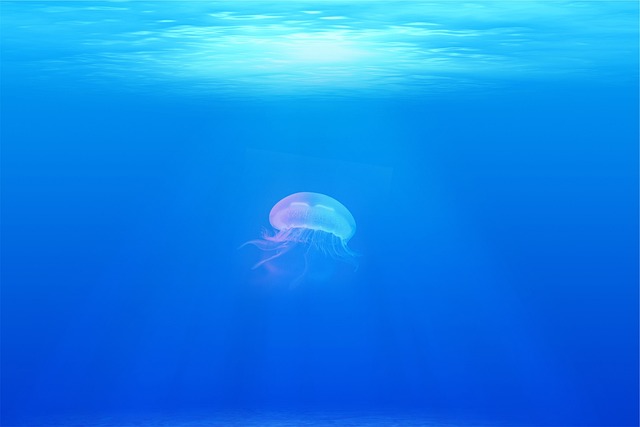
Dive into the fascinating realm of ocean life through the power of the written word. Join us as we embark on a journey to explore the depths of the vast oceans, discovering the mysteries and wonders that lie beneath the rolling waves. Through the art of writing, we open a portal to an enchanting realm, where we can delve into the lives of majestic marine creatures, the hidden treasures of the coral reefs, and the delicate ecosystems that exist beneath the surface.
By harnessing the power of language, we can transport readers to the vibrant world beneath the ocean’s surface. Let your imagination run wild as you craft vivid descriptions of the brilliant colors that adorn tropical fish, the playful dance of dolphins, and the graceful movements of elegant sea turtles. Share knowledge and insights into the challenges faced by marine life, shedding light on the importance of conservation and our role in protecting these delicate ecosystems. Through writing, we have the opportunity to educate, inspire, and create awareness about the mesmerizing wonders of our oceans, leaving readers with a newfound appreciation for the aquatic world.
- Discover: Uncover the secrets of creatures that dwell in the depths, from the mighty whales to the tiniest seahorses.
- Inform: Educate readers about the threats faced by marine life, raising awareness about the importance of conservation.
- Inspire: Capture the imagination of your readers, sparking a sense of wonder and awe for the fascinating world that lies beneath the waves.
- Connect: Foster a connection between humans and the ocean, encouraging readers to develop a deeper understanding and empathy towards marine life.
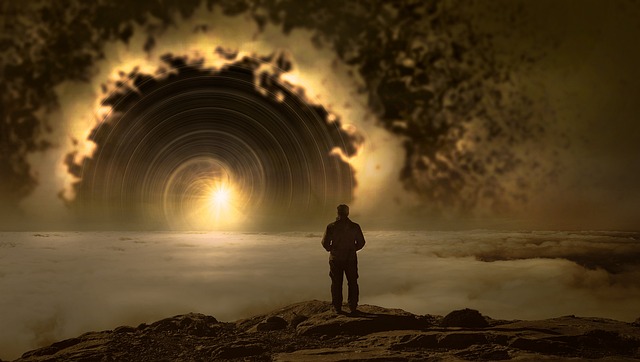
Step into a world filled with mystery and enchantment as you embark on a journey through the mesmerizing tales of the sea. Inspired by the vastness and beauty of the ocean, these captivating stories will transport you to hidden depths and far-off shores, awakening your imagination and stirring your curiosity.
Discover the fascinating legends surrounding mythical sea creatures and legendary lost cities that have fascinated sailors and adventurers throughout the ages. Dive into the rich history of maritime exploration, unearthing tales of intrepid explorers who braved treacherous waters in search of new lands and untold treasures. These tales of courage and perseverance serve as a testament to the indomitable spirit of humanity.
- Uncover the secrets of ancient underwater civilizations and the echoes of their existence.
- Delve into the eerie legends of ghost ships that sail the seas, forever lost in time.
- Explore the mesmerizing beauty and vibrant life of coral reefs, home to a myriad of fascinating creatures.
- Marvel at the power and majesty of mighty sea storms that have tested the mettle of countless seafarers.
Immerse yourself in the world of maritime wonder and let your imagination run wild with stories inspired by the ocean’s wonders. These tales of the sea are bound to captivate readers of all ages with their sense of adventure and untamed magic.
Are you ready to set sail on a literary voyage like no other?
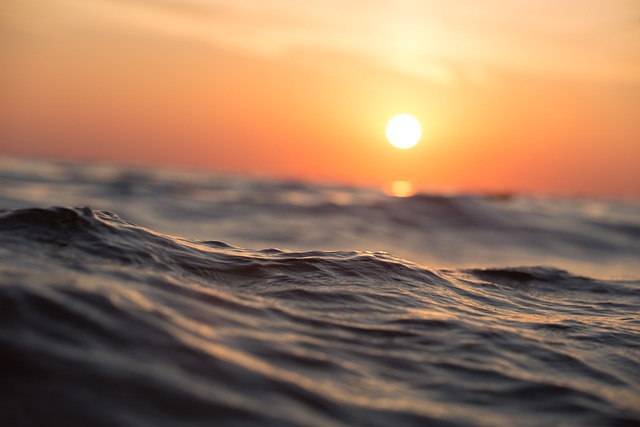
Unlocking the Untapped Potential beneath the Rhythmic Tide
Dive deep into the realm of imagination as you embark on a journey through the captivating world of ocean-inspired creativity. The vastness of the ocean holds within its depths a mysterious allure that has long captivated the human spirit. From the rhythmic crashing waves to the mesmerizing shades of blue, the ocean offers a limitless source of inspiration that can set your creative fire ablaze.
Embark on a quest to explore the uncharted territories of your mind, guided by the ebb and flow of the waves. Immerse yourself in the gentle whispers of the ocean breeze, allowing the cool mist to envelop your senses. As you wander along the sandy shores, let the creativity wash over you like the foam of a crashing wave, igniting sparks of inspiration you never knew existed.
Unleash Your Inner Wordsmith: Words That Echo the Ocean’s Magic
Language itself takes on a new dimension when dipped in the salty waters of the sea. Like the tides, words ebb and flow, carrying stories from far-off lands. As you immerse yourself in the ocean’s embrace, let the lexicon of its depths seep into your writing. Brush strokes of aquamarine, coral, and seashell enchantments can color your prose, painting vivid pictures that come to life in the reader’s mind.
Summon your inner poet and explore a palette of maritime metaphors. Comparisons to the ocean’s mighty strength or the serenity of a calm sea at twilight can infuse your words with a deeper meaning. Unlock the treasure chest of nautical expressions to imbue your writing with the spirit of the seafaring soul. Let your pen dance across the paper like a skimming seagull, leaving behind a trail of ink that tells tales of the ever-inspiring ocean.
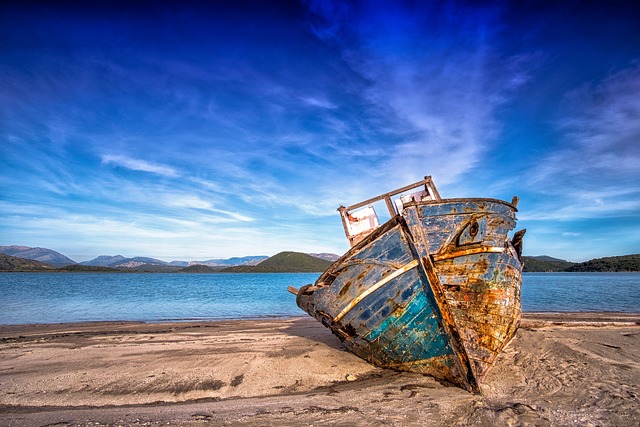
– From Shipwrecks to Mermaids: Unique Marine Themes to Fuel Your Writing
Explore the depths of the ocean and unleash your creativity with these captivating marine themes that will add a refreshing touch to your writing. Transport your readers to a world filled with shipwrecks and mermaids, where mystery and enchantment intertwine. Dive right in to find inspiration for your next adventure.
With countless tales of lost treasure and haunting mysteries concealed beneath the waves, shipwrecks offer a treasure trove of inspiration. From ancient vessels that sailed the seas hundreds of years ago to modern-day wrecks, each holds its own unique story waiting to be told. Consider exploring the following aspects:
- Historical Significance: Research famous shipwrecks with grim or heroic pasts and let their stories ignite your imagination.
- Mysterious Artifacts: Dive deep into the artifacts recovered from shipwrecks and imagine their purpose, value, or mystical properties.
- Survivor Tales: Uncover stories of resilience and survival against all odds, painting vivid portraits of human spirit and determination.
Legends of mermaids have captivated seafarers for centuries, and they continue to enchant readers with their ethereal beauty and mystical allure. Delve into the mesmerizing world of mermaids and unleash your creativity with these ideas:
- Origin Myths: Explore the various origins of mermaids and the cultures that believed in their existence, weaving your stories around these fascinating legends.
- Intriguing Personalities: Imagine the lives, emotions, and motivations of individual mermaids, diving into their complex relationships with humans or their own underwater society.
- Underwater Kingdoms: Envision stunning underwater landscapes, bustling mermaid cities, and the intricate ecosystems they inhabit.
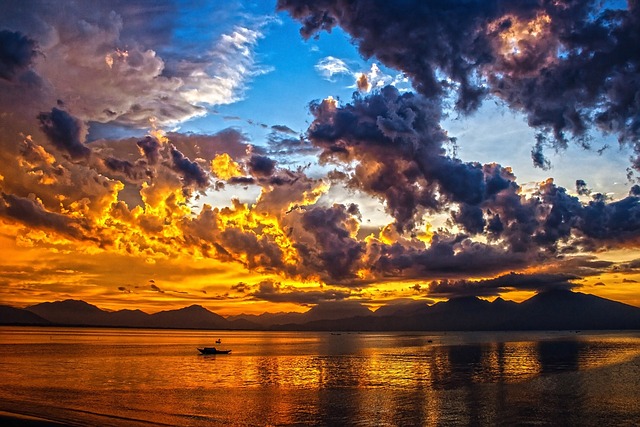
Delve into Nature’s Poetry: Expressing the Beauty of the Ocean through Words
As one stands on the shore, gently caressed by the salty breeze, it becomes impossible to ignore the mesmerizing allure of the boundless ocean. A poetic tapestry of sights, sounds, and emotions unravels before our eyes, revealing the power of nature’s artistry. The ocean, with its vastness and mystery, has been a muse for countless writers and poets, inspiring them to write eloquently about its magnificence. Let us embark on a poetic journey, exploring the beauty of the ocean through the power of words.
In the realm of oceanic poetry, authors strive to capture the essence of this enchanting landscape, skillfully weaving words into vivid tapestries that paint a mental picture of the sea’s splendor. Through the use of metaphors and sensory language, they convey the rhythmic dance of waves, the vibrant colors of coral reefs, and the harmonious symphony of marine life. Such poetry transports readers to a tranquil seascape where they can marvel at the sheer magnitude of the ocean’s expanse.
- Metaphors: Poets employ metaphors to liken the ocean to various elements, such as a vast liquid canvas or an eternal mirror reflecting the sky.
- Sensory Language: By incorporating descriptive terminology, poets enable readers to experience the salty tang of the air, the gentle lapping of waves, or the warmth of the sun on their skin.
- Rhythm and Flow: The cadence of oceanic poetry often mirrors the ebb and flow of the tides, creating a mesmerizing rhythm that echoes the cyclic nature of the sea.
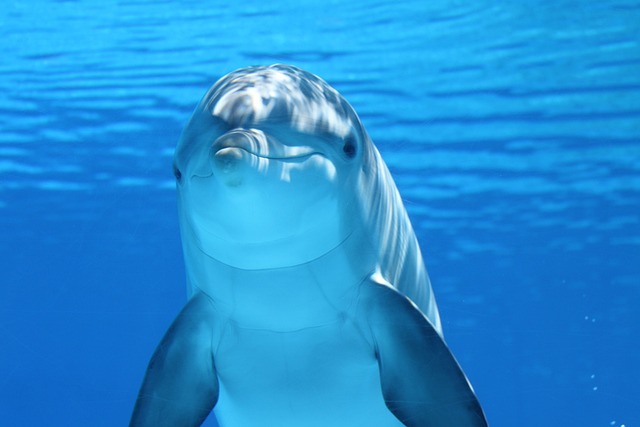
When it comes to writing, few topics are as captivating and important as marine conservation. Our oceans are teeming with life, and they play a vital role in maintaining the health of our planet. By incorporating marine awareness into your writing, you can not only educate and inspire your readers, but also contribute to the preservation of these remarkable ecosystems. Here are some tips to help you infuse marine awareness into your writing:
- Research, research, research: Before diving in, take the time to research and familiarize yourself with various marine conservation topics. Learn about endangered species, coral bleaching, overfishing, and other pressing issues affecting our oceans. This will ensure your writing is accurate and well-informed.
- Choose your perspective: Decide whether you want to approach marine conservation from a scientific, environmental, or human impact perspective. Each perspective offers a unique lens through which to explore and raise awareness about the challenges our oceans face.
- Create engaging narratives: Weaving captivating stories around marine conservation topics can captivate readers and allow them to connect emotionally with the issue at hand. Share real-life experiences, personal encounters, or explore the intricate relationships between marine species to evoke empathy and a sense of urgency.
Use vivid descriptions: Paint a vivid picture with your words as you describe the enchanting depths of the ocean. Help readers visualize the vibrant colors of a coral reef, the playful acrobatics of dolphins, or the majestic grace of a humpback whale. By enhancing their imagination, you can ignite a sense of wonder and appreciation for our marine world.
With the power of your words, your writing has the potential to raise awareness about marine conservation, motivate action, and ultimately contribute to a brighter future for our oceans. So, grab your pen or keyboard and embark on a journey to dive into the depths of marine awareness through your writing!
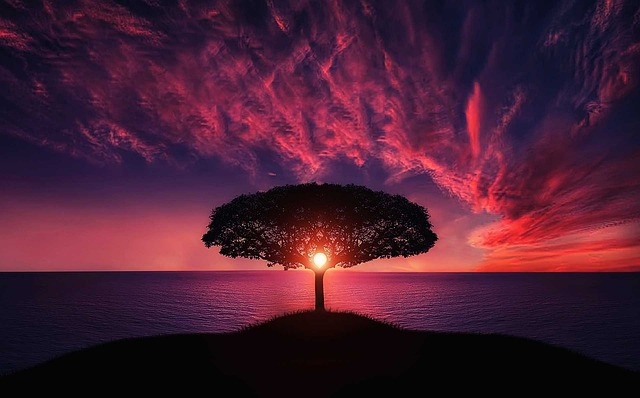
In the world of storytelling, vivid descriptions play a crucial role in captivating readers and bringing narratives to life. When it comes to harnessing the power of ocean imagery, the possibilities are truly endless. By incorporating rich and evocative descriptions, you can transport your audience to the depths of the vast ocean, immersing them in a sensory experience that complements your storytelling.
Imagine describing a scene where the ocean meets the horizon, with waves crashing against the shore in a rhythmic symphony. The vivid imagery of the shimmering blue waters, the salty air kissing your skin, and the gentle sound of seagulls creates a powerful sensory experience for your readers. By harnessing these vivid descriptions, you can make your readers feel as though they are standing on the sandy beach, witnessing the unpredictable beauty of the ocean firsthand.
- Use metaphors and similes: Compare the ocean to various elements, such as “The waves rolled towards the shore like a colossal herd of wild horses.”
- Appeal to the senses: Describe the scent of the ocean, the sound of crashing waves, the taste of salt in the air, and the feeling of sand between your toes.
- Explore the ocean’s diversity: Highlight the multitude of vibrant marine life, from majestic whales gracefully swimming to colorful coral reefs teeming with fish.
By harnessing the power of ocean imagery, you can evoke emotions, create memorable scenes, and enrich your narratives. So, whether you’re writing a novel, crafting a blog post, or simply painting a picture with your words, diving into the depths of oceanic descriptions will undoubtedly captivate your audience and leave a lasting impression.
Q: What are ocean writing prompts? A: Ocean writing prompts are creative prompts or ideas that encourage writers to dive into marine narratives. They provide a starting point or stimulus to inspire and guide writers in exploring various themes related to the ocean.
Q: Why are ocean writing prompts important? A: Ocean writing prompts can expand the imagination and creativity of writers, pushing them to explore the wonders of the ocean. They help writers to discover and develop their unique writing style while exploring the beauty, mystery, and complexity of marine environments.
Q: How can ocean writing prompts be used? A: Writers can use ocean writing prompts in many ways. They can be used as a warm-up exercise to kickstart a writing session or as a way to overcome writer’s block. These prompts can also be used as a tool for educational purposes, encouraging students to learn about marine life while improving their writing skills.
Q: What types of ocean writing prompts can one expect? A: Ocean writing prompts can cover a wide range of topics. These may include descriptions of marine landscapes, exploration of underwater habitats, adventures with sea creatures, or even thought-provoking questions that delve into environmental issues and ocean conservation. The prompts can be tailored to different genres, such as poetry, fiction, or non-fiction.
Q: Can ocean writing prompts be suitable for all writers? A: Absolutely! Ocean writing prompts can be suitable for writers of all levels and ages. Whether you are a beginner or an experienced writer, these prompts offer an opportunity for everyone to connect with the ocean world and foster their creative skills. They can be adapted to cater to various writing abilities and interests.
Q: How can ocean writing prompts inspire writers? A: Ocean writing prompts can evoke vivid imagery, sensory experiences, and emotional connections to the ocean, serving as a source of inspiration for writers. They can spark the imagination by encouraging writers to explore themes of adventure, exploration, science, conservation, or personal connections to the marine world.
Q: Where can one find ocean writing prompts? A: Ocean writing prompts can be found in various sources, such as online writing platforms , writing workshops, creative writing books, or educational websites. Additionally, there are social media communities dedicated to sharing prompts, and writers can create their own prompts based on their personal interests and experiences with the ocean.
Q: How can ocean writing prompts benefit the readers? A: Readers can also enjoy the fruits of ocean writing prompts. Engaging with marine narratives can allow readers to experience the beauty of the ocean through the eyes of the writer. It provides an opportunity for readers to learn about marine life, environmental issues, and conservation efforts, all while enjoying an engaging narrative.
Q: Can ocean writing prompts help raise awareness about the ocean? A: Yes, certainly! Through creative storytelling, ocean writing prompts can raise awareness about marine conservation, environmental challenges, and the importance of preserving the ocean. This can inspire readers to develop a deeper understanding of the ocean ecosystem and motivate them to take action to protect our seas.
Q: Are there any specific tips for using ocean writing prompts effectively? A: To make the most of ocean writing prompts, it’s important to let your imagination run wild. Don’t limit yourself to conventional ideas; explore unique perspectives and experiment with different genres. Embrace the natural beauty, awe, and mystery of the ocean while weaving your narrative. Most importantly, enjoy the writing journey and let the prompts guide you into a marine-inspired story!
In conclusion, the ocean offers endless opportunities for storytelling. Whether it’s the beauty of marine life or the power of the waves, these writing prompts will inspire you to dive deeper into the world of marine narratives. So grab your pen and let your creativity flow with the vastness of the sea. Happy writing!
Office Depot Check Writing Software: Simplify Check Creation
Kenyon Summer Writing Program: Explore Your Creative Side
Leave a Comment Cancel reply
Save my name, email, and website in this browser for the next time I comment.
Reach out to us for sponsorship opportunities.
Welcome to Creative Writing Prompts
At Creative Writing Prompts, we believe in the power of words to shape worlds. Our platform is a sanctuary for aspiring writers, seasoned wordsmiths, and everyone. Here, storytelling finds its home, and your creative journey begins its captivating voyage.
© 2024 Creativewriting-prompts.com
60+ Words To Describe The Ocean When "Big" And "Blue" Just Won't Do
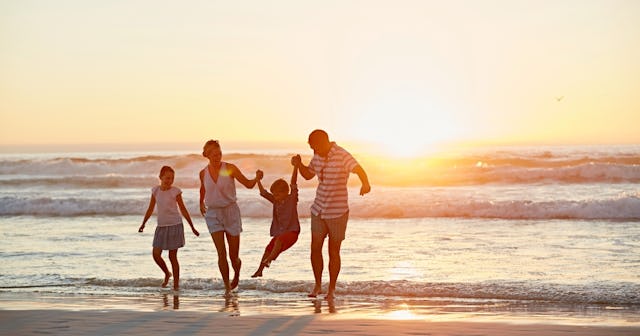
You ever stare out into the ocean and think, “God, you’re so beautiful.” Who hasn’t, right? Take, for instance, Billie Eilish. She definitely knows the power of the ocean. Do you really think her hit song “Ocean Eyes” would’ve been so haunting if she named it “Lake Eyes” or “River Eyes?” No. That’s because the ocean is one of the most magical wonders of the world. There’s something so soothing about staring into that blue abyss that brings such a compelling sense of peace and awe. Yep, make no waves about it; the sea’s majesty just can’t be beat, which explains why it can be so hard to find words to describe the ocean. Whether you’re trying to piece together a scene in your novel, put together a descriptive homeschool lesson , or compose the most intriguing Instagram caption for a trip to the beach with your babies, perfectly capturing the essence of the ocean can be tricky.
So, how do you encapsulate all its mysteries and beauty? Keep reading! The following words will help you, ahem, seas the day.
Best Words to Describe the Ocean
- Shallow: (noun) an area of the sea, a lake, or a river where the water is not very deep.
- Turquoise: (noun) a greenish-blue color.
- Furious: (adjective) extremely angry.
- Legendary: (adjective) remarkable enough to be famous; very well known.
- Hydrating: (verb) cause to absorb water.
- Massive: (adjective) exceptionally large.
- Endless: (adjective) having or seeming to have no end or limit.
- Choppy: (adjective) of a sea or river having many small waves.
- Perilous: (adjective) full of danger or risk.
- Rich: (adjective) plentiful; abundant.
- Tempestuous: (adjective) very stormy.
- Turbulent: (adjective) moving unsteadily or violently.
- Foggy: (adjective) full of or accompanied by fog.
- Hungry: (adjective) having a strong desire or craving.
- Relentless: (adjective) harsh or inflexible.
- Priceless: (adjective) so precious that its value cannot be determined.
- Majestic: (adjective) having or showing impressive beauty or dignity.
- Phenomenal: (adjective) very remarkable; extraordinary.
- Mighty: (adjective) possessing great and impressive power or strength, especially on account of size.
- Infinite: (adjective) limitless or endless in space, extent, or size; impossible to measure or calculate.
- Sullen: (adjective) bad-tempered and sulky; gloomy.
- Treacherous: (adjective) hazardous because of presenting hidden or unpredictable dangers.
- Insubstantial: (adjective) not solid or real; imaginary.
- Limitless: (adjective) without end, limit, or boundary.
- Gentle: (adjective) moderate in action, effect, or degree; not harsh or severe.
- Planetary: (adjective) relating to the earth as a planet.
- Hypnotic: (adjective) exerting a compelling, fascinating, or soporific effect.
- Peaceful: (adjective) free from disturbance; tranquil.
- Serene: (adjective) calm, peaceful, and untroubled; tranquil.
- Cosmic: (adjective) inconceivably vast.
- Remote: (adjective) situated far from the main centers of population; distant.
- Mysterious: (adjective) difficult or impossible to understand, explain, or identify.
- Dominant: (adjective) most important, powerful, or influential.
- Vast: (adjective) very great extent or quantity; immense.
- Limpid: (adjective) of a liquid, free of anything that darkens; completely clear.
- Wide: (adjective) at a considerable or specified distance from a point or mark.
- Merciless: (adjective) showing no mercy or pity.
- Eternal: (adjective) lasting or existing forever; without end or beginning.
- Calm: (adjective) of the sea, not disturbed by large waves.
- Primordial: (adjective) existing at or from the beginning of time; primeval.
- Distant: (adjective) far away in space or time.
- Stormy: (adjective) having large waves or dark clouds because of windy or rainy conditions.
- Somber: (adjective) dark or dull in color or tone; gloomy.
- Ethereal: (adjective) extremely delicate and light in a way that seems too perfect for this world.
- Everlasting: (adjective) lasting forever or a very long time.
- Ungovernable: (adjective) impossible to control or govern.
- Incredible: (adjective) difficult to believe; extraordinary.
- Restless: (adjective) offering no physical or emotional rest; involving constant activity or motion.
- Mystical: (adjective) inspiring a sense of spiritual mystery, awe, and fascination.
- Unfathomable: (adjective) of water or a natural feature, impossible to measure the extent of.
- Azure: (adjective) bright blue in color like a cloudless sky.
- Overbearing: (adjective) unpleasantly or arrogantly domineering.
- Crystalline: (adjective) very clear.
- Magnificent: (adjective) impressively beautiful, elaborate, or extravagant; striking.
- Never-ending: (adjective) something that seems to have no end.
- Frothy: (adjective) fizzy or something covered in a bunch of small bubbles.
- Ominous: (adjective) threatening or something that seems like something bad is going to happen.
- Misty: (adjective) hazy, foggy or cloudy.
- Teeming: (verb) something full or saturated with.
- Pontic: (adjective) a term relating to ancient Pontus, a region on the coast of the Black Sea in Turkey.
This article was originally published on November 7, 2021
Beach Description Essay
- To find inspiration for your paper and overcome writer’s block
- As a source of information (ensure proper referencing)
- As a template for you assignment
Looking for simple and beautiful descriptive writing about a beach in summer? The beach description essay below is just what you need! Get inspired for your own creative writing with us.
Introduction
Description of a beach.
Summer is the perfect time for individuals to visit and enjoy the marvelous scenes along the coast. In addition, the feelings and experiences felt on the beach during the summer are always fantastic. Several sceneries and experiences are seen and felt at the beach during summer. These include; the plantation along the beach and inside the sea, the animals, the waters, and the people found on the beach.
The beach appears to be alive and joyful with the presence of the natural vegetation. There are evergreen plantations both along and inside the beach. Images of buoyant seaweeds can be seen along the shore. Palms trees are seen to stand tall along the beach, dancing to the tune of the breeze emanating from the waters of the sea.
The sea grapes and the sea oats are also observed gathered in clusters in the sea next to the shore. Their colored flowers are splendid and brighten at the shining of the summer sun. The sweet scent of the flower grapes sends a signal to the world about the hope brought by nature.
The atmosphere is fully intensified by the aroma produced by the buoyant sea flowers. In addition, from afar, images of leafless trees are also observed. The perfect combination of the vegetation along the beach and inside the sea displays the beauty of nature to the highest peak.
It mesmerizes the eyes to gaze at the beautiful creatures that hover all over the beach and on the deep-sea waters. There are sights of beautiful birds that fly all over the dry shoreland and over the seawaters. Their colored feathers brightened the sea with a marvelous appearance at their illumination by the sun’s rays.
There are varieties of birds that are in the vicinity. For instance, there are pelicans and seagulls. Pelicans are seen hovering over the sand, singing sweet melodies that make the atmosphere at the beach vibrant. The seagulls are also observed to be flying over the seawater in small groups. Some of the birds are gathered in groups spreading the wings that cloaked a soft shadow on the gentle water ripples.
Next to the shore, there are sea turtles that seem to enjoy the summer heat from the sun. Their eggs are also seen to be exposed on the sand by the children that play on the shoreline. Bees are seen flying from one flower to another over the sea grapes. The humming of the bees as they gather nectar from the sea flowers attracts insect-eating birds.
Large crowds are observed all over the seashore. These people come to enjoy themselves on the beach at this period of the year. In the sea, people of all ages and sexes are seen swimming and playing with the cool seawater. The scorching heat from the summer sun is felt on the forehead of all individuals.
This makes the people chill themselves in the cool waters of the sea. The children are seen playing beach ball on the shoreline. Some children are also seen pelt each other with sand on the shoreline. Besides, young boys are observed climbing tall palm trees to gather fruits.
What is more, several activities take place along and inside the shoreline. Vendors are seen carrying ice creams and soft drinks all over the shoreline. Views of homes, hotels, and other buildings that run along the peak of the beach are also seen. On the sand where children play, pieces of shells are scattered.
In most cases, children collect the shells for fun. In the shades built along the shoreline, people are seen reading books, journals, and magazines. Some are seen idling on the sand, while few adults are observed playing football.
However, there is a disgusting scene of plastic bags, cigarette butts, food wrappers, and beer bottles along the beach. These items seem to pollute the entire shoreline and the seawater.
Anglers are also observed far into the sea casting large nets into the waters to have a bulk catch of their prey. Some of the anglers are also observed perching on the edge of the shore carrying sticks in their hands. Their faces displayed the anticipation that they had for their prey.
The deep waters of the sea produce a marvelous view for anyone who gazes at the sea. The water is seen to be slowly running low on the shore. Small waves are also observed crashing on the shoreline. The surface of the sea is seen to appear blue in color.
However, some portions are also seen to have the spectrum that results from the sun’s refracted rays. Deep inside the sea, there are high waves that lift boats up and down mightily. The shimmering waves of the sea that are clear and blue mirror the rays of the hot sun. The refreshing breeze that emanates from the seawater is enjoyable.
In conclusion, the beach has a perfect view and activities that are delightful to experience during the summer. It is a place that everyone would love to be at all times.
- Shakespeare’s Play A Midsummer Night’s Dream
- The Motif of Alienation in Tennessee Williams’s Play The Glass Menagerie
- “Flip, Flop to the Beach We Go” and “Pooper Snooper”: The Topic of Pets
- Native Dune Systems vs. Man-Made Beach Structures
- Florida Beach Renourishment and Its Importance
- Homer's "The Iliad" History and Content
- The Interpretation of Henrik Ibsen’s A Doll's House Presented by Patrick Garland
- The Tragedy of Othello
- Odysseus as Husband
- William Shakespeare’s Hamlet, Prince of Denmark
- Chicago (A-D)
- Chicago (N-B)
IvyPanda. (2019, April 17). Beach Description Essay. https://ivypanda.com/essays/description-of-the-beach-scene-in-summer/
"Beach Description Essay." IvyPanda , 17 Apr. 2019, ivypanda.com/essays/description-of-the-beach-scene-in-summer/.
IvyPanda . (2019) 'Beach Description Essay'. 17 April.
IvyPanda . 2019. "Beach Description Essay." April 17, 2019. https://ivypanda.com/essays/description-of-the-beach-scene-in-summer/.
1. IvyPanda . "Beach Description Essay." April 17, 2019. https://ivypanda.com/essays/description-of-the-beach-scene-in-summer/.
Bibliography
IvyPanda . "Beach Description Essay." April 17, 2019. https://ivypanda.com/essays/description-of-the-beach-scene-in-summer/.
Never struggle with Show-and-Tell again. Activate your free trial or subscribe to view the Setting Thesaurus in its entirety, or visit the Table of Contents to explore unlocked entries.
HELPFUL TIP:
Textures and sensations:, possible sources of conflict:, people commonly found in this setting:, setting notes and tips:, related settings that may tie in with this one:, setting description example:, techniques and devices used:, descriptive effects:.
Descriptive Words to Describe the Ocean

The ocean is a vast and wonderful part of our world. It’s big and covers most of our Earth. When you stand on the beach and look out at the water, it goes further than your eyes can see. The ocean has many faces and moods, making it a source of inspiration and wonder. In this article, we will explore a variety of words to describe the ocean, that can help us to describe the ocean in all its beauty and mystery.
Table of Contents
Adjectives For Ocean
This list of adjectives is perfect for depicting the ocean’s many moods and scenes. Whether it’s the calm of a serene sea or the fury of a stormy one, these adjectives help paint a detailed picture of the ocean’s ever-changing character.
- Alluring – Attractively fascinating
- Blue – Rich, azure color
- Boundless – Without limits
- Breathtaking – Stunningly beautiful
- Capricious – Unpredictable, changeable
- Choppy – Rough, with small waves
- Deep – Great depth
- Elusive – Hard to define
- Enigmatic – Mysteriously alluring
- Ethereal – Unearthly beauty
- Ever-changing – Constantly evolving
- Expansive – Wide, extensive
- Fathomless – Immeasurably deep
- Harsh – Severe, extreme
- Illuminated – Light-reflecting
- Imposing – Commanding, formidable
- Infinite – Endlessly vast
- Inviting – Appealing, welcoming
- Luminous – Emitting light
- Majestic – Grand, impressive
- Melancholic – Somber, gloomy
- Mesmerizing – Hypnotically beautiful
- Mirroring – Reflecting the sky
- Moody – Expressive, changing
- Mysterious – Unknown, enigmatic
- Mystical – Supernatural aura
- Nourishing – Supporting life
- Ominous – Foreboding, threatening
- Primal – Ancient, original
- Pristine – Unspoiled, pure
- Pulsating – Throbbing, beating
- Relentless – Unyielding, persistent
- Resilient – Enduring, strong
- Restless – Always moving
- Rhythmic – Regularly repeating waves
- Roaring – Loud, powerful
- Salty – High salt content
- Serene – Peaceful, calm
- Soothing – Calming, relaxing
- Teeming – Full of life
- Tempestuous – Violently stormy
- Timeless – Eternal, ageless
- Tranquil – Extremely calm
- Turbulent – Rough, stormy
- Uncharted – Not mapped
- Unforgiving – Merciless, harsh
- Untamed – Wild, uncontrolled
- Vast – Extremely large
- Vivid – Bright, intense colors
- Whispering – Soft, hushing sounds

Words To Describe the Ocean Waves
Focus on the dynamic and powerful ocean waves. This part provides words that describe their rhythm, force, and the emotions they evoke. It’s a useful resource for anyone wishing to describe the hypnotic allure of waves, from gentle ripples to towering swells.
- Billowing – Swelling outward
- Caressing – Gently touching
- Choppy – Rough, uneven
- Crashing – Forcefully breaking
- Cresting – Reaching a peak
- Dramatic – Striking, impressive
- Elegant – Graceful, beautiful
- Enveloping – Surrounding, engulfing
- Ephemeral – Short-lived, fleeting
- Fierce – Intense, aggressive
- Foamy – Frothy, bubbly
- Forceful – Strong, powerful
- Gentle – Soft, mild
- Glistening – Shimmering, sparkling
- Glittering – Sparkling, twinkling
- Hypnotic – Entrancing, spellbinding
- Incessant – Non-stop, continuous
- Invigorating – Energizing, refreshing
- Iridescent – Shining, colorful
- Lapping – Gently washing
- Melodic – Musical, harmonic
- Menacing – Threatening, ominous
- Mesmerizing – Hypnotically captivating
- Mighty – Powerful, strong
- Mirror-like – Smooth, reflective
- Mystical – Enigmatic, magical
- Playful – Light, frolicsome
- Pounding – Heavy, forceful
- Primal – Basic, fundamental
- Receding – Moving back
- Relentless – Unceasing, persistent
- Restless – Never still
- Rhythmic – Regular pattern
- Rolling – Gently undulating
- Serene – Peaceful, tranquil
- Silent – Quiet, noiseless
- Soothing – Calmly relaxing
- Surging – Swelling forward
- Sweeping – Moving broadly
- Swelling – Expanding, growing
- Thunderous – Loud, roaring
- Tranquil – Calm, peaceful
- Tumultuous – Turbulent, chaotic
- Undulating – Wavelike motion
- Unpredictable – Variable, erratic
- Vigorous – Strong, energetic
- Whispering – Soft, hushing
Poetic Words for Ocean
Explore a set of special and beautiful words that show how lovely and mysterious the ocean is. These words are picked because they make clear, strong pictures in your mind and make you feel things. They are great for poets and writers who want to include the grandness of the ocean in their writing.
- Abyss – Deep, mysterious depths
- Brine – Salty water
- Deep – Vast, profound expanse
- Ebb – Receding tide
- Fathom – Unit to measure depth
- Marine – Related to the sea
- Nautical – Pertaining to sailors
- Neptune’s realm – Mythical ocean kingdom
- Offing – Distant part of the sea
- Poseidon’s domain – Mythical sea territory
- Salt-spray – Ocean mist
- Seabed – Ocean floor
- Shoreline – Edge of the sea
- Surge – Powerful wave
- Tide – Sea’s rise and fall
- Undertow – Subsurface current
- Vastness – Immense expanse
- Wavelet – Small wave
- Whirlpool – Swirling water
- Zephyr – Gentle sea breeze
Words To Describe Hair Words To Describe Fire Words to Describe a Book
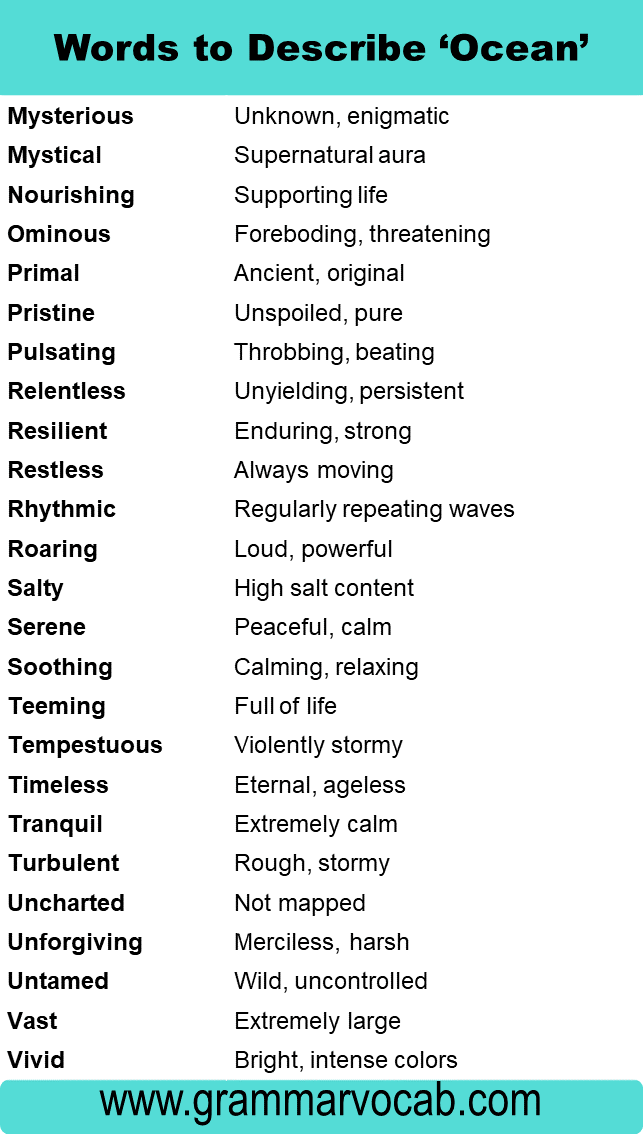
Related Posts
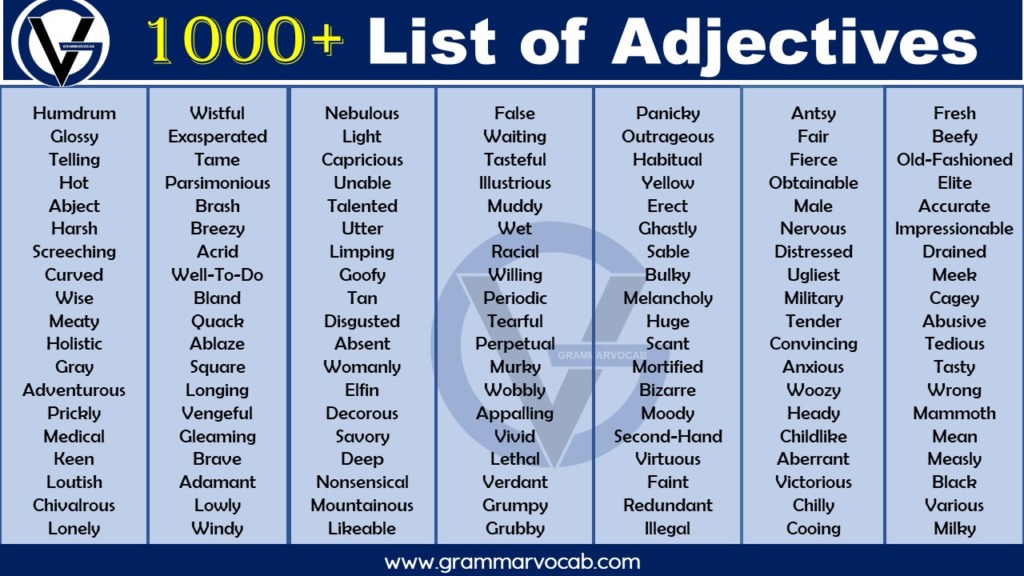
1000+ List of Adjectives | Definition, List & PDF Link

Words to Describe Someone Special – Adjective To Describe

List of Emotions and Feelings Words
Leave a comment cancel reply.
Your email address will not be published. Required fields are marked *
Save my name, email, and website in this browser for the next time I comment.
Describing Words for Sea: Examples & Adjectives

When it comes to the sea, words often fail to capture its vastness and beauty. But with the right adjectives, we can attempt to paint a vivid picture of this awe-inspiring natural wonder. In this article, I’ll be sharing a selection of descriptive words that will help you convey the essence of the sea. From tranquil to tempestuous, these adjectives will allow you to express the various moods and characteristics of the sea in all its glory.
Table of Contents
How to Describe sea? – Different Scenarios
1. calm and serene.
When the sea is calm and serene, it invokes a sense of peace and tranquility. Here are some adjectives to describe this scenario:
Example: The sea stretched out before me, its tranquil surface reflecting the golden hues of the setting sun.
2. Powerful and Mighty
In some scenarios, the sea can be a force of nature, displaying its power and might. Here are adjectives to describe this scenario:
Example: I stood by the shore, in awe of the sea’s fierce and raging power as waves crashed against the rocky cliffs.
3. Playful and Lively
The sea can also possess a playful and lively nature, especially on sunny days. Here are adjectives to describe this scenario:
Describing Words for sea in English
By incorporating these descriptive words into your teaching materials, you can help your students develop a deeper understanding and appreciation for the sea. Whether it’s through storytelling, art activities, or nature walks, these adjectives will allow your students to create vivid images in their minds and express their thoughts about the sea in an engaging and creative way.
Adjectives for sea
The sea is a majestic and eternal force of nature that captivates us with its vastness and beauty. Trying to capture the essence of the sea with words can be challenging, but with the right adjectives, we can paint a vivid picture of its various qualities. In this section, I will explore positive and negative adjectives that can help describe the sea in different scenarios. Let’s dive in!
Positive Adjectives for Sea
| Adjective | Definition |
|---|---|
| Calm | Peaceful and tranquil |
| Serene | Unaffected by disturbance |
| Gentle | Mild and soothing |
| Sparkling | Shining brightly |
| Radiant | Emitting light or warmth |
| Vibrant | Full of energy and life |
| Captivating | Fascinating and enchanting |
| Breathtaking | Astonishingly beautiful |
| Majestic | Impressive and grand |
| Invigorating | Energizing and refreshing |
| Transcendent | Beyond ordinary experience |
| Pristine | Pure and untouched |
Here are some example sentences to illustrate the use of these adjectives:
Negative Adjectives for Sea
While the sea can be awe-inspiring and breathtaking, it also has its negative aspects. Here are five negative adjectives that can be used to describe the sea:
| Adjective | Definition |
|---|---|
| Treacherous | Dangerous and unpredictable |
| Menacing | Threatening and intimidating |
| Unforgiving | Not showing mercy or compassion |
| Thunderous | Loud and deafening |
| Unsettling | Causing discomfort or unease |
By incorporating these descriptive adjectives into teaching materials, we can help students develop a deeper understanding and appreciation for the sea. Whether it’s its serene beauty or its powerful nature, the sea continues to inspire and amaze us.
Synonyms and Antonyms with Example Sentences
Synonyms for sea.
When it comes to describing the sea, there are several synonyms that can be used to capture its vastness and beauty. Here are some examples of synonyms for the sea:
| Word | Definition |
|---|---|
| Ocean | A large body of saltwater that covers most of the Earth’s surface. |
| Seas | Large bodies of saltwater that are partially enclosed by land. |
| Waves | Swells or undulations on the surface of the sea caused by the wind. |
| Briny | Salty or containing a high concentration of salt. |
| Marine | Relating to the sea or ocean. |
Example Sentences:
Antonyms for sea
While the sea can be described with awe-inspiring adjectives, there are also antonyms that can be used to explain its contrasting qualities. Here are some antonyms for the sea:
| Word | Definition |
|---|---|
| Land | The solid ground or soil that is not covered by water. |
| Desert | A barren and arid place with little or no vegetation. |
| Dry | Lacking moisture or the presence of water. |
| Inland | Located away from the coast or body of water. |
| Solid | Not liquid or gas; firm and stable. |
By utilizing these synonyms and antonyms, educators can encourage young learners to explore and develop a deeper understanding of the sea and its various characteristics.
Additionally, I have introduced synonyms and antonyms for the sea, including words like ocean, seas, waves, briny, and marine. These words can be used interchangeably to add variety and depth to descriptions of the sea. I have also provided example sentences that demonstrate how these words can be used effectively.
Furthermore, I have presented antonyms for the sea, such as land, desert, dry, inland, and solid. These words serve as a contrast to the sea, highlighting its unique qualities and characteristics. Example sentences have been provided to illustrate the differences between the sea and these antonyms.
Educators can utilize these adjectives, synonyms, and antonyms to help students explore and develop a deeper understanding of the sea. By incorporating these descriptive words into lessons and discussions, students can enhance their vocabulary and gain a better appreciation for the sea and its wonders.
Related Posts
Describing blood: adjectives with examples, adjectives for age: describing words & examples.
As we navigate through life, one thing that remains constant… Read More » Adjectives for Age: Describing Words & Examples
Adjectives for Fight: Examples and Describing Words

How to Describe Blood in Writing [100 Examples + Tips]
Ever tried describing blood in your story and ended up sounding like a crime report? Let’s turn that clinical detail into gripping prose that makes your readers’ hearts race.
Here is how to describe blood in writing:
Describe blood in writing by focusing on its color, consistency, flow, smell, taste, and impact. Use vivid words like “crimson” and “clotted,” and phrases such as “the metallic scent filled the air” or “dark, dried blood stained the floor” to create intense, immersive scenes.
In this guide, you’ll learn everything you need to know (with examples) for describing blood in stories.
Types of Blood Descriptions

Table of Contents
The first thing you need to know is the type of blood you want to describe:
- Fresh Blood – Bright red, indicative of recent injury.
- Dried Blood – Darker, crusted, showing time has passed.
- Gushing Blood – Abundant, indicating severe injury.
- Oozing Blood – Slow flow, often from minor cuts.
- Clotted Blood – Thickened, usually in healing wounds.
Traits and Characteristics of Blood for Descriptions
Next, you want to figure out the specific sensory elements you want to highlight in your blood descriptions.
Think about these traits and characteristics:
Consistency
The color of blood can vary depending on its state and the injury.
Fresh blood is typically bright red, while older blood can turn dark red or even brown as it dries. Describing the color can help set the scene and indicate the severity or age of the injury.
Bright red blood can indicate a recent or severe wound, adding urgency to the scene.
Dark, dried blood suggests older injuries, hinting at a past event.
Example Descriptions:
- Bright red blood streamed from the cut, stark against his pale skin.
- The dark, dried blood on the floor told a tale of past violence.
Consistency describes how thick or thin the blood is.
Blood can vary from thin and watery to thick and clotted. Fresh blood is often thinner, while clotted blood is thicker and more viscous.
Describing the consistency can add detail to your scene, making it more realistic.
Thin, watery blood can suggest a superficial wound, while thick, clotted blood might indicate an older, healing injury.
- Thin, watery blood dripped from the scrape, barely noticeable.
- Thick, clotted blood oozed from the wound, a sign of the body’s attempt to heal.
The flow of blood can indicate the severity of the injury.
Gushing blood suggests a serious wound, possibly life-threatening.
Oozing blood indicates a less severe, but still significant, injury. Describing the flow can help convey urgency or calm in a scene.
A rapid flow can create a sense of panic, while a slow ooze might suggest a more controlled situation.
Use flow to influence the pacing and emotional intensity of your scene.
- Blood gushed from the deep gash, pooling quickly on the ground.
- A slow ooze of blood seeped from the cut, forming a small puddle.
The smell of blood can be distinctive and evocative.
Blood has a metallic scent, often described as similar to rust or iron. This can add a sensory detail to your writing, making the scene more immersive.
Describing the smell of blood can evoke a strong reaction from readers, heightening the emotional impact of the scene.
Use smell to engage readers’ senses and draw them deeper into the narrative.
- The metallic scent of blood filled the air, sharp and unmistakable.
- A faint, rusty smell lingered in the room, a reminder of the recent violence.
The taste of blood can be described when relevant to the scene.
Blood has a metallic taste, often compared to sucking on a penny. This can be a powerful detail in certain scenes, adding to the visceral experience.
Describing the taste of blood can enhance the reader’s immersion and understanding of the character’s experience.
Use taste sparingly, but effectively, to create a vivid and impactful scene.
- He could taste the metallic tang of blood in his mouth, like copper.
- The sharp, iron taste of blood made her wince, a stark reminder of her injury.
The impact of seeing blood can vary greatly.
Seeing blood can evoke fear, shock, or even excitement, depending on the context. Describing the emotional impact of blood on characters can deepen readers’ connection to the story.
Use the sight of blood to convey character emotions and heighten the tension in your scene.
The impact can reveal much about the characters and their situation.
- The sight of blood made her heart race with fear.
- Seeing the blood, he felt a surge of adrenaline and anger.
How to Describe Blood on Hands in a Story
Describing blood on hands can be powerful and evocative. It adds intensity to the scene and reveals character emotions and actions.
Blood on hands can signify guilt, violence, or injury. Fresh blood might be warm and sticky, while dried blood could be crusty and dark.
Consider the setting and the character’s reaction to the blood.
Is it their own or someone else’s? Are they horrified, indifferent, or frantic?
The texture and sensation of the blood can add depth to your description. Describe how it feels—sticky, slippery, or dry—and how it looks—bright red, dark, or smeared.
- His hands were smeared with bright red blood, the warmth still clinging to his skin.
- She stared at her hands, the dark, crusted blood cracking as she moved her fingers.
- Blood dripped from his hands, pooling on the floor beneath him.
- Her hands felt sticky with the metallic scent of fresh blood lingering in the air.
- The sight of his blood-covered hands made her stomach churn.
How to Describe Blood on the Floor in a Story
Describing blood on the floor sets the scene for violence, injury, or danger.
Fresh blood will be bright red and possibly pooling, while older blood might be dark, dried, or smeared.
Consider the pattern—spatters, puddles, or trails—and what it indicates about the events that occurred. Describing the smell, texture, and appearance of the blood can make the scene more immersive.
Is the floor stained, slippery, or sticky? How do the characters react to seeing the blood?
Use these details to heighten the tension and draw readers into the scene.
- Bright red blood pooled on the floor, a stark contrast to the white tiles.
- Dark, dried blood stained the floor, a grim reminder of the violence that had occurred.
- Blood splattered across the floor, each drop telling a story of the struggle.
- The metallic scent of blood filled the air, the floor slick and slippery beneath his feet.
- A trail of blood led across the floor, guiding them to the source of the injury.
How Do You Describe Blood Without Saying Blood
Describing blood without directly saying “blood” can add subtlety and creativity to your writing. Here are some effective ways to do it.
Use descriptive phrases that evoke the imagery and sensation of blood.
Focus on its color, texture, and impact. Consider terms like “crimson liquid,” “sticky warmth,” or “ruby droplets.” Mention the metallic scent or taste, or describe the visual contrast it creates in the scene.
The context in which the blood appears can also provide clues to its presence without naming it directly.
By using vivid, sensory details, you can convey the presence of blood in a nuanced and engaging way.
- Crimson liquid dripped from the wound, staining the fabric below.
- The sticky warmth clung to her skin, a visceral reminder of the injury.
- Ruby droplets scattered across the floor, marking a path of violence.
- The sharp, metallic scent filled the air, unmistakable and intense.
- His hands were covered in a dark, viscous substance, a testament to the recent struggle.
50 Best Words to Describe Blood in a Story
Choosing the right words to describe blood can add vivid detail to your story.
Here are 50 of the best words to use:
- Splattering
- Rust-colored
- Freshly-spilled
50 Best Phrases to Describe Blood in a Story
Phrases can paint vivid pictures in readers’ minds.
Here are 50 of the best phrases to describe blood:
- Bright red blood streamed from the wound.
- The dark, dried blood told a grim story.
- Fresh blood pooled on the ground.
- Thick, clotted blood oozed from the cut.
- Blood gushed from the deep gash.
- A slow ooze of blood seeped from the wound.
- The metallic scent of blood filled the air.
- A rusty smell lingered in the room.
- He could taste the metallic tang of blood.
- The sharp, iron taste made her wince.
- Blood stained his clothes, a stark reminder of the battle.
- The sight of blood made her heart race.
- A trickle of blood ran down his arm.
- Blood spattered across the walls.
- The fresh blood was bright against his pale skin.
- The old blood was dark and crusted.
- The blood flowed steadily, refusing to stop.
- The metallic taste of blood filled his mouth.
- Blood dripped from the knife.
- The smell of blood was overwhelming.
- Blood oozed from the wound, slow and steady.
- The sight of blood made her feel faint.
- Blood pooled around his feet.
- The warm blood felt sticky on her skin.
- Blood splattered as the fight continued.
- The blood was thick and viscous.
- Blood trickled down his face.
- The blood was bright and fresh.
- A smear of blood marked the spot.
- Blood streamed from the injury.
- The dark blood was nearly black.
- The blood had a coppery scent.
- Blood gushed from the wound, unstoppable.
- The blood oozed out slowly.
- Blood stained the ground.
- Blood spurted from the cut.
- The sight of blood turned his stomach.
- Blood soaked into the fabric.
- The blood was still warm.
- Blood smeared across the floor.
- The thick blood clung to his fingers.
- Blood dribbled from the wound.
- Blood covered the blade.
- The blood was congealed and dark.
- A pool of blood spread slowly.
- Blood flowed from the cut, slow but steady.
- The blood was bright and alarming.
- Blood spattered on his face.
- The metallic tang of blood was unmistakable.
3 Examples of Describing Blood in Writing
To effectively convey the presence and impact of blood, it’s useful to see examples in different writing styles.
Here are three examples: in a horror novel, a medical drama, and a fantasy adventure.
Example 1: Horror Novel
The old house was silent except for the creaking floorboards under Jane’s feet. She moved cautiously, her flashlight cutting through the darkness. Suddenly, she froze. There, splattered across the wall, was fresh blood. It was bright red, stark against the peeling wallpaper. The metallic scent hit her next, making her stomach churn.
Her hands trembled as she reached out to touch it. The blood was still wet, warm even. A sense of dread washed over her. Someone had been hurt here, and it had happened recently. The slow, oozing drops of blood trailing down the wall seemed to pulse with life, as if the house itself was bleeding.
Example 2: Medical Drama
Dr. Thompson rushed into the operating room, where chaos reigned. The patient on the table had a severe abdominal wound, and blood was gushing out at an alarming rate. The bright red blood contrasted sharply with the sterile white of the surgical instruments. Nurses worked frantically to stem the flow, but the blood kept coming.
It was thin and watery, a sign of a severed artery. The metallic smell of blood filled the air, mingling with the antiseptic scent of the hospital. Dr. Thompson quickly donned his gloves and took over, his hands steady despite the urgency. He could feel the thick, clotted blood as he worked to close the wound, his mind focused on saving the patient’s life.
Example 3: Fantasy Adventure
Eldrin crouched behind a boulder, his heart pounding. The battle had been fierce, and blood stained the ground around him. He glanced at his arm, where a deep cut oozed dark, thick blood.
The metallic scent of blood mixed with the earthy smell of the forest. He winced as he wrapped a cloth around the wound, the pain sharp and unrelenting. The sight of his own blood made him grit his teeth in determination. He had to keep going.
The blood flowed steadily, not too fast, but enough to be a concern. Eldrin took a deep breath, ignoring the taste of iron in his mouth, and pushed forward, his resolve unshaken.
Check out this good video about how to write better and more immersive descriptions, including about blood:
Final Thoughts: How to Describe Blood in Writing
From the metallic scent to the sticky texture, blood has so much descriptive potential. Use it wisely, and your readers will feel every drop.
Related Posts
- How To Describe A Crime Scene In A Story (100+ Examples)
- 35 Tips for Writing Fight Scenes (Ultimate Guide + Examples)
- How to Describe a Phone Ringing in Writing (+Examples)
- 250 Horror Writing Prompts (Scary Good Ideas)
- How To Write A Horror Romance Novel (Tips, Examples, Guide)
Articles on Creative writing
Displaying 1 - 20 of 46 articles.

UK’s creative industries bring in more revenue than cars, oil and gas – so why is arts education facing cuts?
Adam Behr , Newcastle University

An ode to the social realism of ‘boring’ lyrics – from The Kinks to The Streets
Glenn Fosbraey , University of Winchester

How to write a love song – three tips for beginners from a songwriting expert
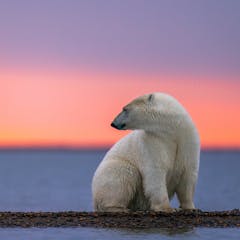
‘ Cli-fi ’ might not save the world, but writing it could help with your eco-anxiety
Rachel Hennessy , The University of Melbourne ; Alexander Cothren , Flinders University , and Amy T Matthews , Flinders University

I research the therapeutic qualities of writing about art – here are three steps for trying it yourself
Patrick Wright , The Open University

Creative writing can help improve one’s health: a South African study shows how
Dawn Garisch , University of Cape Town and Steve Reid , University of Cape Town

Boxing empowered me to express my trauma – now, I help other abuse survivors do the same, combining it with creative writing
Donna Lyon , The University of Melbourne

How a poet and professor promotes racial understanding with lessons from history
Quraysh Ali Lansana , Oklahoma State University

How to understand your grief through writing
Catherine Cole , Liverpool John Moores University

Write what you know: the COVID experience is a rich resource for year 12 English exams
Janet Dutton , Macquarie University

5 ways to teach the link between grammar and imagination for better creative writing
Brett Healey , Curtin University

Writing can improve mental health – here’s how
Christina Thatcher , Cardiff Metropolitan University

In an AI world we need to teach students how to work with robot writers
Lucinda McKnight , Deakin University

To succeed in an AI world, students must learn the human traits of writing

‘Lit therapy’ in the classroom: writing about trauma can be valuable, if done right
Yannick Thoraval , RMIT University

Too many adjectives, not enough ideas: how NAPLAN forces us to teach bad writing

What my students taught me about reading: old books hold new insights for the digital generation
Kate Flaherty , Australian National University

Life sentences – what creative writing by prisoners tells us about the inside
Dr Michael X. Savvas , Flinders University
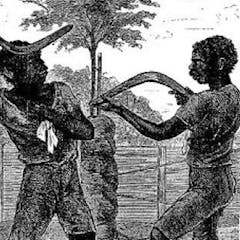
Frozen in time, the casts of Indigenous Australians who performed in ‘human zoos’ are chilling
Katherine Johnson , University of Tasmania

‘I’m in another world’: writing without rules lets kids find their voice, just like professional authors
Related topics.
- Australian literature
Top contributors
Visiting Fellow, Centre for Cultural and Creative Research, University of Canberra, University of Canberra
Associate professor, Deakin University
Adjunct assistant professor, University of New England
PhD Student, School of Education, Curtin University
Lecturer in Creative Writing, University of Southern Queensland
Associate Dean of Humanities and Social Sciences, University of Winchester
Dean of Research (Creative), University of South Australia
Associate Professor in Media, University of Notre Dame Australia
Distinguished Professor of Creative Practice, Faculty of Arts and Design, University of Canberra
Senior Lecturer in Creative Writing, University of Stirling
Lecturer in Professional and Creative Writing, Deakin University
Principal Lecturer in Creative Writing, Coventry University
Professor of Creative Arts, Griffith University
PhD candidate in Digital Cultures, University of Sydney
Conjoint Senior Lecturer, University of Newcastle
- X (Twitter)
- Unfollow topic Follow topic

- news&blog

N. D. Wilson on N. D. Wilson
(because if I have to write it, I refuse to do so in the third person)
I was born in 1978 to a couple of Jesus People hippies. An older sister was waiting for me. A younger followed.
My father accidentally became a pastor (it’s a long story and I was very young) and has been one ever since. I remember attending church in a large auto body shop, with a beer truck pulled off to the side and frogs and crickets singing back-up. I also remember chasing one of my friends around afterward, and causing her to fall and peel open her chin on the concrete. After that, I caught her easily.
In pre-school, I dug up a dead (and at that point furless) cat in my sandbox. We never learned who had buried it, but I would like to thank them. It was an exciting day. I carried it to the kitchen door of our duplex and told my mother that I had discovered a chicken.
My father helped to found a school with a classical emphasis, which I attended K-12. I have a real fondness for the classics (ancient and modern) as a result. Through my elementary years I spent innumerable hours enjoying and getting into trouble with my friend Joe Casebolt. He lived on the edge of town with creek, large barn, fields, and abandoned rock quarry readily available. We floated the creek on a large chunk of Styrofoam (and sank), went fishing (and got caught) in a bull pasture, collected dozens of mouse skulls (from owl pellets), and took possession of the abandoned combine in the the old quarry. In some elementary grade or other, we were assigned a class presentation on the subject of religion. We constructed an idol (of sorts) out of legos and when the time came we walked calmly to the front of the room, bound a lego-man to a popsicle stake, and lit him on fire. His head swelled up nicely. I couldn’t tell you what grade we received, but our classmates approved.
Speaking of fire, when I was in sixth grade, my mother gathered the family around the television to watch a documentary entitled “The Story of English”. Instead, after noticing the kitchen light flick off, I investigated, and found the ceiling crackling merrily. The roof burned off, we avoided finishing the documentary, and then we went to live with some friends who were house-sitting for someone else. The backyard was a large pond, and over that summer, I became closely acquainted with turtles, streptococcus and penicillin shots in the rear end.
After my turtle-and-shot period, after high school and college, I met (it’s complicated), a surfer girl from Santa Cruz, California. And I love her. Never having desired to be entirely governed by reason, I asked her to marry me one month after we met, and I offered her my great-grandmother’s ring. In a momentary but sufficient lapse of judgment, she took it, and I haven’t stopped smiling since. At least not for long. Now, we have five imaginative and jolly children, and they serve as our primary source of entertainment.
Not everything I write is for children, but all of it is childish. I love the dark flavor of Flannery O’Connor and the supra-realism of Borges, though I can’t help but try to add the laughter of G. K. Chesterton. P. G. Wodehouse and C. S. Lewis have been with me my entire life, and always will be. J. R. R. Tolkien cannot be imitated.
Now you know me. But not really. Because I left out all the joy of the dinner table, how my parents read and inked everything I wrote, and the collective imagination that I shared (and share) with my sisters. You haven’t heard about the fabulous eight months during which I had a dog named Tyler, or my Grandfathers’ war stories, or anything about birthdays or Christmas. And there’s nothing in here about Zorro. Oh, well.
N. D. Wilson is the best-selling author of the “100 Cupboards” trilogy (now in more than twenty languages) and the acclaimed “Ashtown Burials” series (both from Random House). His first work of nonfiction was the ground-breaking Notes from the Tilt-a-Whirl (Thomas Nelson), which was adapted into the widely distributed “bookumentary” film of the same name. He has adventured on camera for the National Geographic Channel, is currently involved in producing C.S. Lewis’ The Great Divorce for the screen (which he adapted himself), and once typed a short story on a napkin for Esquire magazine. His writing has been featured on media outlets ranging from NBC’s Today Show to NPR’s All Things Considered .
He was born and raised in Moscow, Idaho, where he currently lives in a tall skinny house with the blue-eyed girl he stole from the ocean (along with their five young explorers, two tortoises, and one snake). Nathan D. Wilson holds a Master’s degree in Liberal Arts from Saint John’s College in Annapolis, Maryland (2001). He served as a part-time Lecturer at New Saint Andrews from 2001-2004, and was promoted to Fellow of Literature in the fall of 2004. He still teaches part-time.
The Amazing Tale of the Butterfly-Unicorn-Ballerina-Princess and the Giant, Creeping Land Squid – Powells.com Zorro and Beyond – Powells.com Life Cycle of a Writer – Life Cycle of a Writer
Epic Fantasy Meets Americana In ‘The Dragon’s Tooth’ – NPR: All Things Considered Fort Made of Books Book Reviews and More Entertainment Weekly Book Page Kidsread.com
Today Show – Al’s Book Club for Kids: 100 Cupboards Better TV – N.D. Wilson Interview 100 Cupboards: The Chestnut King Ashtown Burials: The Dragon’s Tooth Notes from the Tilt-a-Whirl , Book Notes from the Tilt-a-whirl , DVD
Remaking the Shroud , National Geographic Channel, 2010 The Rise and Fall of Circumcision : A Napkin Novel, Esquire Magazine, 2007
Sign up for awesomeness
Latest tweet.

IMAGES
COMMENTS
The purpose of this article is to look at ways to describe its nature, and dig into its essential characteristics as useful background for our research and writing. The ocean is a truly remarkable feature of our planet, covering over 70% of the Earth's surface and containing 97% of the planet's water.
27 Fabulous Describing the Ocean Writing Ideas. I could taste the salt in the air and knew I had to get to the ocean to…. The lapping waves…. The hypnotic motion of the ocean…. Describe the beauty of the ocean and how it makes you feel. The ebbing tide was…. I was hypnotized by the water because of its….
Whether you're a writer, a lover of the sea, or simply curious, here's a curated list of 100 adjectives to describe the ocean and their explanations, arranged in alphabetical order 🙂. Words To Describe The Ocean. Abyssal: Referring to the deep-sea regions, beyond the reach of sunlight.
Describing the ocean in writing is a delicate task. One can evoke its essence by delving into its contrasting nature. It is simultaneously ominous and majestic, a testament to the duality of our own existence. The ocean embodies the embrace of freedom, offering a sense of tranquility and calmness. It is a gentle caress, like a summer breeze ...
Here are some of the best phrases to describe waves in your stories. A symphony of water and wind. Sea's rhythmic dance. Whispering aquatic secrets. A ballet of blues and greens. The ocean's mighty applause. Waves kissing the shore. A tapestry of aquatic motion.
ocean. - quotes and descriptions to inspire creative writing. Whatever would the ocean be to the eyes of man, were it not for the bonny light that plays upon her waves. By Angela Abraham, @daisydescriptionari, December 21, 2021 . The ocean brings a flash of blue in the amber light. By Angela Abraham, @daisydescriptionari, December 8, 2020 .
While summer brings in crowds and vibrant energy, winter might render the beach desolate, with only the bravest souls venturing out. Describe these shifts to add depth to your narrative. 6. Sunlit Spectacles. The magic of a beach often unfolds during the golden hours.
Writing Prompts about the Ocean. Exploring the Unseen Depths: Oceans make up 70% of the Earth's surface, yet much of their depths remain a mystery. Consider the perspective of a marine biologist who has just received funding for a groundbreaking exploration initiative. They are tasked with reaching parts of the ocean never before studied.
Tranquil: The ocean exudes a sense of calmness and tranquility. Serene: It evokes a peaceful and serene atmosphere. Crystal-clear: The water is so clear that you can see all the way to the ocean floor. Reflective: The surface of the water mirrors the surrounding landscape, creating a beautiful reflection. 2.
2. Mermaids: - Delve into Nature's Poetry: Expressing the Beauty of the Ocean through Words. - Dive into Conservation: Promoting Marine Awareness in your Writing. Dive into Conservation: Promoting Marine Awareness in your Writing. - Harnessing the Power of Ocean Imagery: Using Vivid Descriptions to Enrich your Narratives.
The sea kicks over every sandcastle in rage and a petty attempt at revenge before settling down in time for Lunar to show off her silver gown. And in the moonlight he cries. And in the twilight he mourns. And in the morning he forgets, ready for another day with the people at the beach. This is a short story about a day at the beach.
A Day at the Beach - a fiction short story. She heard the echo of the waves lapping onto the shore in her ears and the squalk of sea gulls in the hazy blue sky. She smelled the salt air, the sand and the water. It all imbued her senses. She felt the sand squishing between her toes, the water lapping around her feet, the sun setting in the west ...
170 Words To Describe The Ocean. Words to describe the ocean include descriptions of the conditions, large scope and fearsome beauty of marine environments. These can be words that are specific to the sea such as abysmal that technically refers to sea depths from about 10,000 to 20,000 feet. The sea can also be described with adjectives that ...
Best Words to Describe the Ocean. Shallow: (noun) an area of the sea, a lake, or a river where the water is not very deep. Turquoise: (noun) a greenish-blue color. Furious: (adjective) extremely angry. Legendary: (adjective) remarkable enough to be famous; very well known. Hydrating: (verb) cause to absorb water.
Ways to Describe Sea in Writing. Here are 20 amazing ways to describe Sea in Creative Writing: Vast and blue, the sea stretches endlessly. Its turquoise waters gently lap the shore. With roaring waves, the sea displays power. Underneath, the sea hides mysterious depths. At sunset, the sea turns golden. The calm sea reflects the sky.
Description of a Beach. The beach appears to be alive and joyful with the presence of the natural vegetation. There are evergreen plantations both along and inside the beach. Images of buoyant seaweeds can be seen along the shore. Palms trees are seen to stand tall along the beach, dancing to the tune of the breeze emanating from the waters of ...
Colorful knobby coral (brain, stag horn, lacy red and purple sea fans) clinging to the reef. Jagged trenches and dark shadows. Tuna, cod, swordfish, clown fish, blowfish, sunfish, sailfish, marlin, grouper, and other fish in a variety of sizes and colors. Octopi unfurling sinuous legs. Crabs skimming across the ocean floor.
This list of adjectives is perfect for depicting the ocean's many moods and scenes. Whether it's the calm of a serene sea or the fury of a stormy one, these adjectives help paint a detailed picture of the ocean's ever-changing character. Alluring - Attractively fascinating. Blue - Rich, azure color. Boundless - Without limits.
1. Calm and Serene. When the sea is calm and serene, it invokes a sense of peace and tranquility. Here are some adjectives to describe this scenario: Tranquil: The sea is calm and quiet, creating a soothing atmosphere. Serene: The smooth surface of the sea reflects the peacefulness of the surroundings.
Here is how to describe blood in writing: Describe blood in writing by focusing on its color, consistency, flow, smell, taste, and impact. Use vivid words like "crimson" and "clotted," and phrases such as "the metallic scent filled the air" or "dark, dried blood stained the floor" to create intense, immersive scenes.
It's impossible to fancy. I'm ineffably free, floating in the morning orange sky with you. You're so special that I can't resist you. You're superior. I fail to describe how you look - you are so bright that I can't even imagine your face - just your shining azure eyes, full of love, faith and understanding, spark inside my head.
IELTS Reading: gap-fill. Read the following passage about creative writing. New research, prompted by the relatively high number of literary families, shows that there may be an inherited element to writing good fiction. Researchers from Yale in the US and Moscow State University in Russia launched the study to see whether there was a ...
Brett Healey, Curtin University. What children say about free writing is similar to how professional authors describe the creative process. Teachers should give kids freedom to explore, providing ...
Oh, well. The Bio. N. D. Wilson is the best-selling author of the "100 Cupboards" trilogy (now in more than twenty languages) and the acclaimed "Ashtown Burials" series (both from Random House). His first work of nonfiction was the ground-breaking Notes from the Tilt-a-Whirl (Thomas Nelson), which was adapted into the widely distributed ...